Are you looking for winter sun in Europe?
Just because you’re visiting Europe in the cooler months, it doesn’t mean you’ll be shovelling snow!
In fact, head to Southern Europe, and you’ll find an array of coastal towns and cities with milder weather.
The general rule is to go as far south as you can – think Costa del Sol in Spain, the Turkish Riviera or the Greek Islands.
While the weather is cooler than in summertime, generally these warm European destinations in winter are comfortable, perfect for getting out and about.
In fact, if you don’t like extreme heat, you might even prefer them to the summer months!
Let’s delve into these European winter sun destinations!
Where am I most likely to find winter sun in Europe?
Before we begin, let’s make one thing clear: everywhere in Europe is a little cooler in the winter, and you probably won’t be sunbathing or swimming in any of these destinations in January (with the possible exception of the Canary Islands – although the water will be very chilly!).
However, this list of the best places for winter sun in Europe should act as a guide for destinations where you can spend time outdoors, perhaps doing sports or enjoying meals al-fresco, just layering up at night when it gets a bit chilly.
If you’re venturing to Europe from cooler parts of North America, or if you reside in Northern Europe, you’ll definitely notice that these places are sunnier and warmer than where you’ve come from!
So, let’s take a look at the top places for winter sun in Europe.
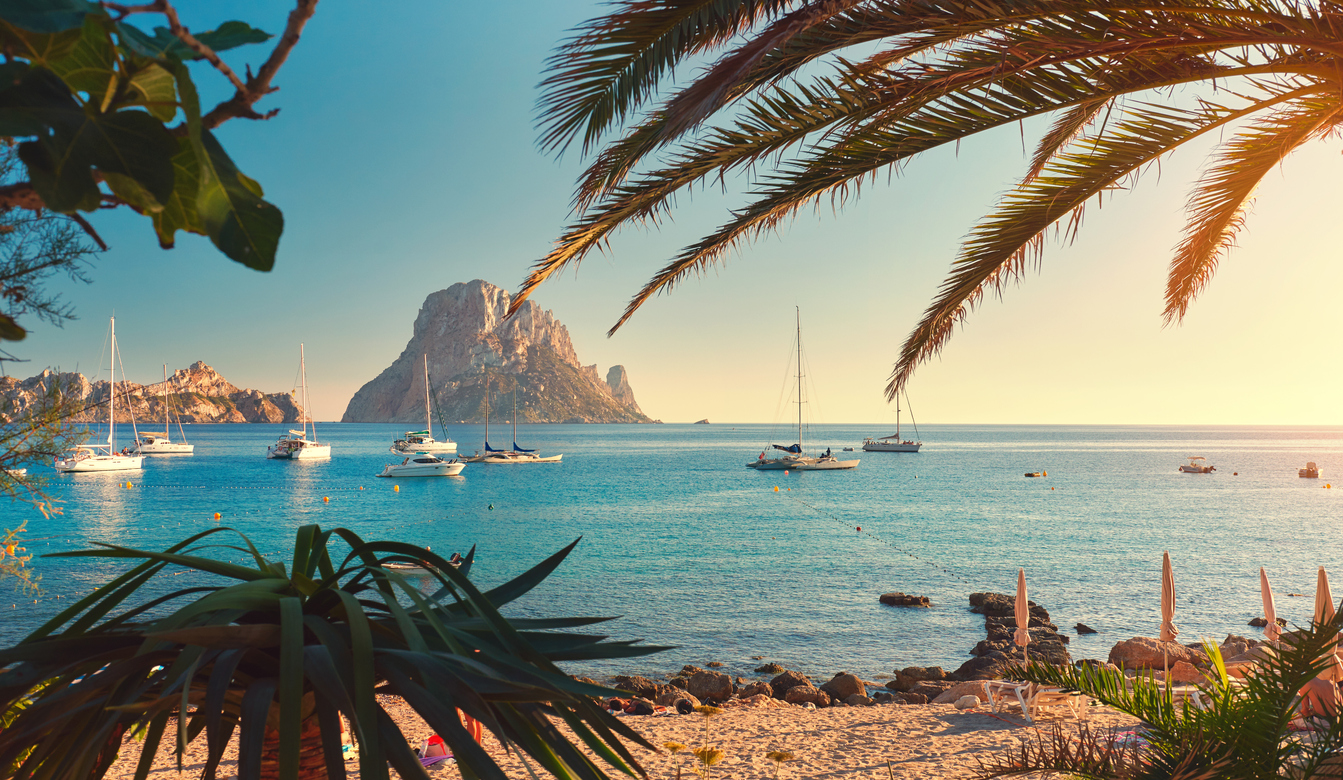
Top 10 Sunniest Places in Europe in winter
- Tenerife, Spain
- Malaga, Spain
- Palermo, Sicily, Italy
- Caligari, Sardinia, Italy
- Paphos, Cyprus
- Valetta, Malta
- Dubrovnik, Croatia
- Rhodes, Greece
- Antalya, Turkey
- Faro, Portugal
Take a look at my posts about the warmest destinations in Europe across the seasons!
- Warmest places in Europe in November
- Warm places to visit in Europe in December
- Warmest places in Europe in January
- Warmest places in Europe in February
- Warmest places in Europe in March
Best Winter Sun Destinations in Europe
The best winter sun destinations in Europe include places in Spain, Italy, Greece, Portugal, Turkey, Albania and even parts of France.
Let’s dig into them!
1. Lanzarote, Canary Islands, Spain
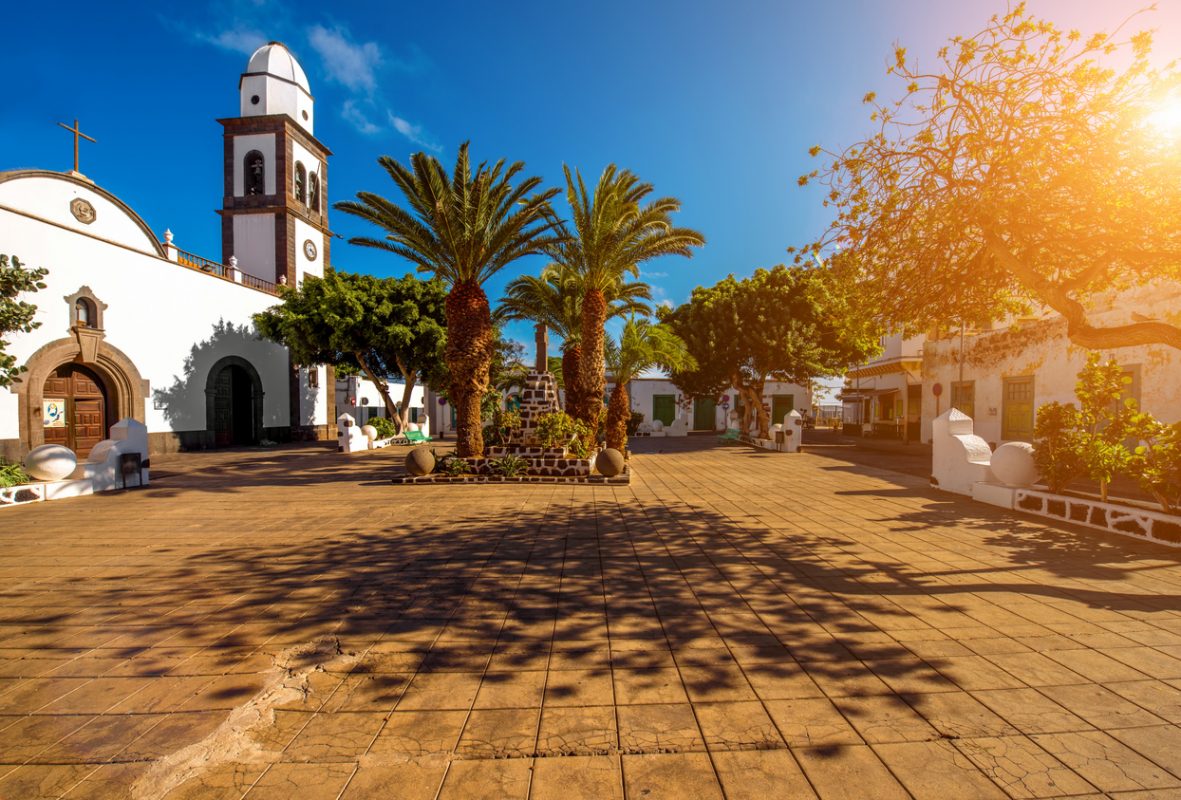
Average temperature in January: 20°C/ 68°F high to 13°/ 55°F low
Lanzarote isn’t your typical winter destination, and that’s precisely why it shines during the colder months.
The most western of the Canary Islands, Lanzarote trades in snowflakes for volcanic landscapes and sun-soaked beaches.
As you land in Arrecife, the island’s capital, consider staying a while before venturing off.
This is no mere airport town; its local markets and historic fortresses like Castillo de San Gabriel offer a rich introduction to Canary Island culture.
From Arrecife, a short drive takes you to the surreal vistas of Timanfaya National Park in the south-central region.
Here, you can marvel at an otherworldly terrain created by historic volcanic eruptions. Visit with a guide to see the best of the park!
The park’s geothermal geysers remind you that the volcanic activity is not a relic of the past but an ongoing phenomenon.
Just when you thought the island was all about natural landscapes, you stumble upon La Geria, famous for its unique vineyards.
The volcanic rocks not only retain water but also serve as barriers against the wind, giving birth to wines unlike any other!
Take a tour, delve into the bottling process, and of course, sample the fruits of such laborious cultivation.
And let’s not forget Puerto del Carmen.
Just a ten-minute drive from the airport, this village serves up one of the island’s largest beaches.
The adjacent pedestrian avenue offers a lively stretch lined with shops, restaurants, and cafes.
It’s a place where you can enjoy a leisurely walk along the shore while watching the sunset, making the winter season feel miles away.
All of this – and more – makes Lanzarote a wonderful place to visit in December, January or February.
See more about Lanzarote in winter here.
2. Fuerteventura, Canary Islands, Spain

Average temperature in January: 20°C/ 64°F high to 12°/ 54°F low
As you step off the plane in Fuerteventura, the closeness to Africa becomes immediately evident.
The air carries the warmth and dryness you’d expect from its western neighbour.
This Spanish island defies winter norms, compelling visitors to swap snow boots for sandals and thick coats for lightweight linen!
The first thing that greets you?
Expansive beaches stretch farther than the eye can see, making it evident why road trips here are so popular!
Driving along the coast reveals why Fuerteventura holds the title for the biggest beaches among the Canary Islands.
These are vast landscapes where the sand seems to merge with the horizon.
The island practically urges you to take it slow, to pause at multiple vantage points and soak in the magnificent views that change with every curve of the road.
The name Fuerteventura, which translates to “strong wind,” isn’t an exaggerated moniker.
The island lives up to its name, especially during the winter months when the winds have a cooling effect.
While the breezy conditions might nudge you to reach for a light sweater, they’re a boon for water sports enthusiasts.
Specifically, windsurfing enjoys a cult-like following here, thanks to the consistently strong winds that provide optimal conditions for both pros and beginners.
But don’t worry if you’re new to the sport; numerous schools along the coast offer lessons, ensuring you’re gliding over the waves in no time.
As you wind down your day, maybe after some windsurfing lessons or another round of epic road-tripping, consider a visit to a local eatery.
Here, you can relish seafood dishes that are as fresh as they come.
Pair it with a glass of Spanish wine, and you’re set for an evening that captures the essence of the island—laid-back yet invigorating, traditional yet constantly surprising.
3. Gran Canaria, Canary Islands, Spain
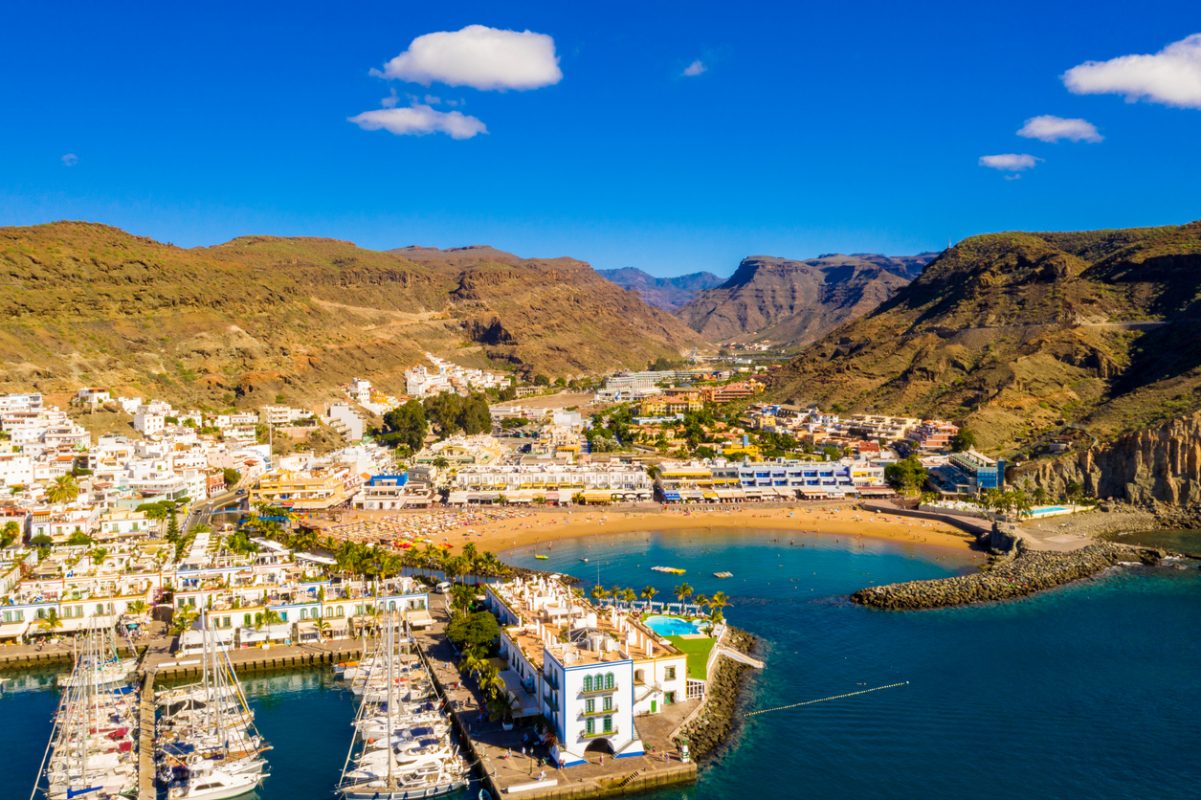
Average temperature in January: 16°C/ 61°F high to 10°/ 50°F low
Gran Canaria might be part of Spain, but its winter experience diverges significantly from what you’d find on the mainland.
Your first touchpoint, Las Palmas de Gran Canaria, is notably more tranquil during the colder months.
The al fresco restaurants still buzz, but without the high-season clamor, making it easier to snag a prime table and enjoy local dishes as you people-watch.
Winter offers another remarkable advantage—clearer skies and less haze, which can make your trip to El Pico de las Nieves even more rewarding.
As the highest point of the island, the crisp winter air makes the colours at sunset more vivid and the panoramic views more spectacular.
Whether you drive, cycle, or hike up, the path enjoys sights of forested mountains dusted with the fallen leaves of the season—a unique feature that sets it apart from the more arid Canary Islands.
Gran Canarian beaches in winter have their own charm.
While it’s a bit cooler than its neighbouring islands, it’s still warm enough for a coastal drive.
The winter sunlight bathes the varied landscapes—ranging from golden sands to rugged cliffs—in a softer light, creating photo opportunities that are different from the harsher, direct summer light.
Don’t overlook the island’s northern beaches during this time.
These areas are often overlooked in favour of the South but offer unique, craggy vistas that seem more dramatic under winter’s muted light.
Read about Gran Canaria in winter by clicking here!
4. Tenerife, Canary Islands, Spain
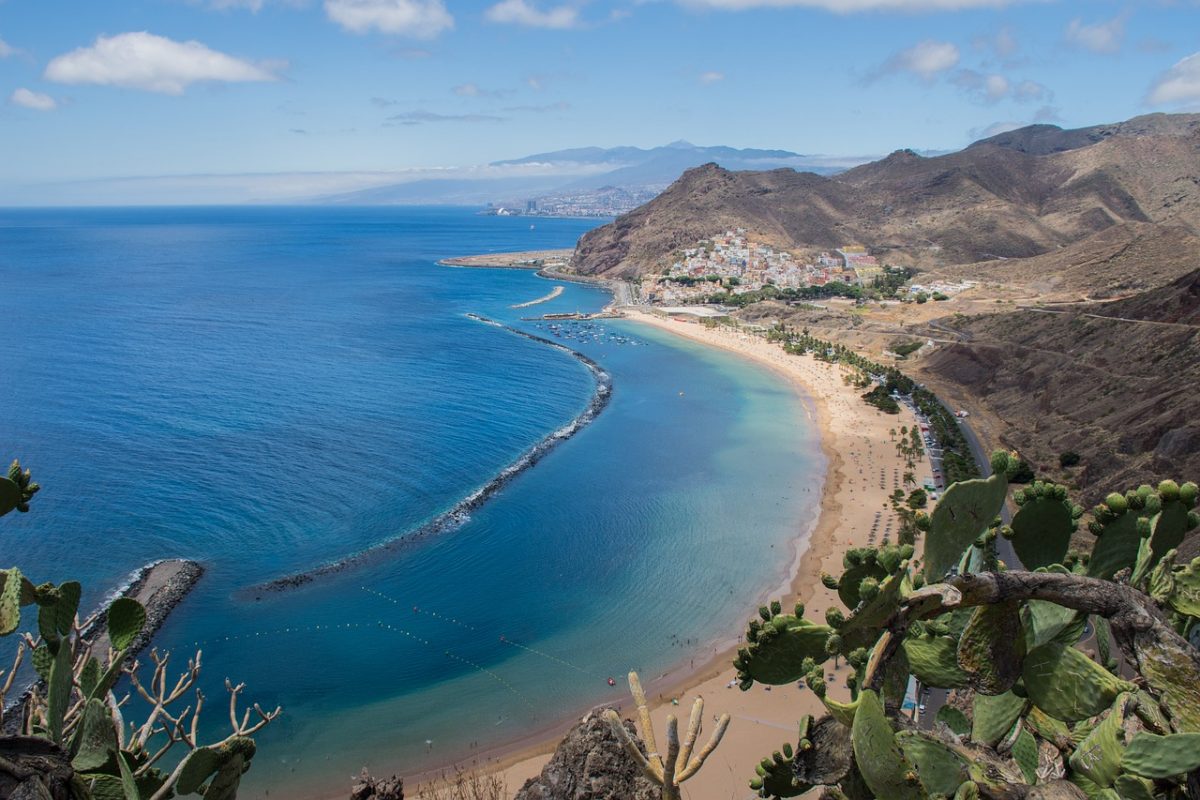
Average temperature in January: 20°C/ 68°F high to 10°/ 50°F low
As the largest of the Canary Islands, Tenerife reigns as one of Europe’s warmest winter getaways, with daytime temperatures frequently hovering around a comfortable 20°C.
One of the island’s premier attractions is Mount Teide, Spain’s highest peak – and while it doesn’t snow in Tenerife’s lowlands, the peak of Teide is snow-capped in the winter!
This does make certain trails less accessible, but when it contrasts to the black lava fields, it’s a beauty.
The cooler air of the Anaga Mountains enhances the aromas of the lush laurel forests as you hike through.
When you’re not conquering peaks or trails, there are plenty of ocean-based activities.
Boat trips into the Atlantic offer opportunities to spot whales and dolphins; it’s one of the only places in Europe you can go on a sunny boat tour in the winter months!
And if adrenaline is your thing, mountain biking trails across the island offer thrills without the summer sweat!
Even in February, it’s only around 8°C cooler than the summer months, which makes Tenerife one of the best sun holiday destinations in winter.
5. Mallorca, Balearic Islands, Spain

Average temperature in January: 15°C/ 59°F high to 7°/ 45°F low
Mallorca in winter—ever considered it?
This sun-soaked Balearic Island defies the season’s stereotypes, maintaining a warm atmosphere with temperatures often rising above the teens.
With nearly 300 days of sunshine to its name, who says winter has to be bleak?
In Mallorca in winter, you can walk along pristine beaches devoid of the usual throngs of tourists.
Yes, the waters might be too cold for a dip, but the tranquillity more than compensates!
In Palma, the island’s vibrant capital, the grandeur of Palma Cathedral silently narrates centuries of history, while a plethora of museums wait to be explored.
If a change of pace is what you’re after, why not take the scenic train ride from Palma to Soller?
Rolling through breathtaking mountain landscapes, you’ll end up in a town famed for its orange groves and art nouveau architecture.
Nearby villages Port de Soller and Pollenca, equally charming, beckon with promises of intimate experiences and local flair.
Mild winter temperatures make for perfect golfing conditions; uncrowded fairways are set against a backdrop of stunning vistas.
And for cyclists, the network of intricate routes becomes even more alluring without the scorching summer sun!
6. Ibiza, Balearic Islands, Spain
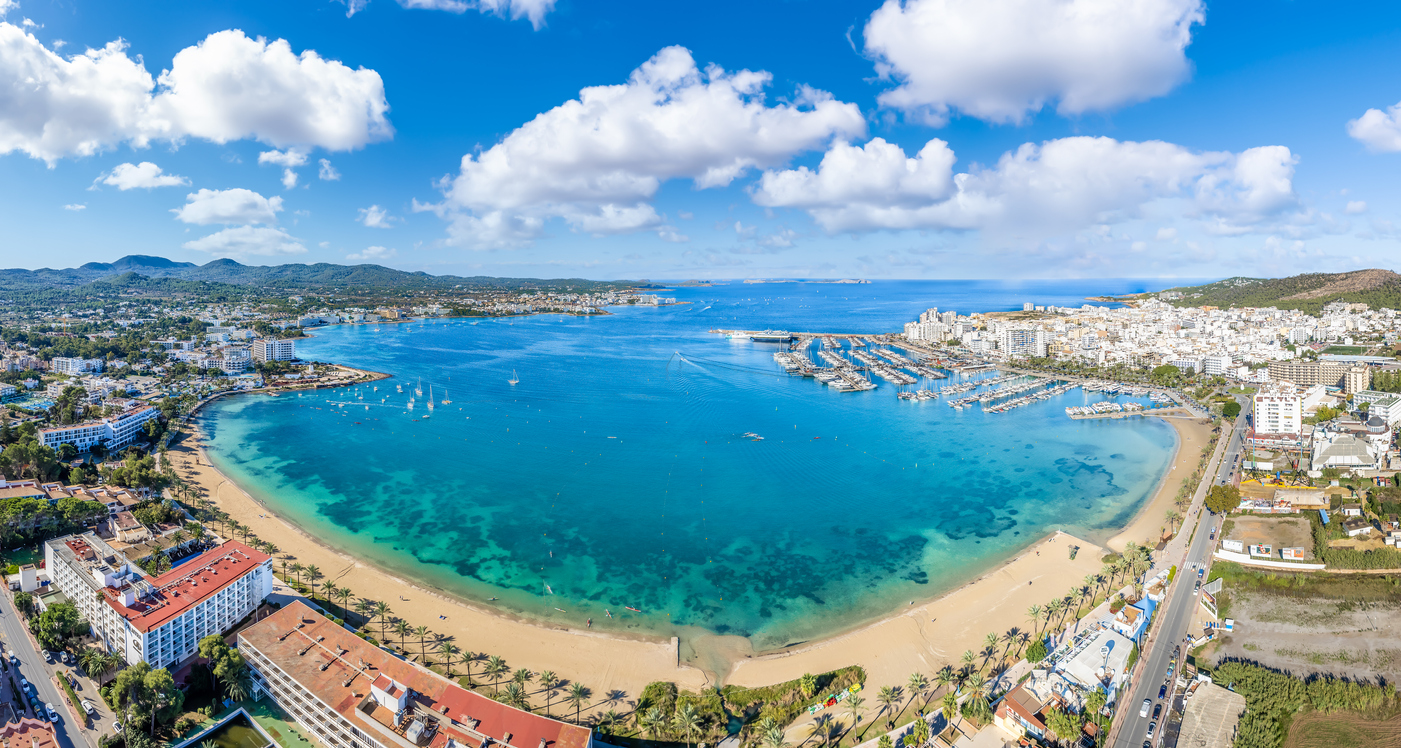
Average temperature in January: 15°C/ 59°F high to 7°C/ 45°F low
Ibiza without the crowd—sounds unorthodox, right?
Winter offers a completely different side to this legendary party island.
Say goodbye to jam-packed beaches and throbbing nightclubs.
Instead, meet a quieter, more introspective Ibiza – that’s equally appealing in its own right.
Winter temperatures here are nothing to snuff at; they’re mild and much more pleasant than you might expect for the season.
The bravest might take a quick dip, but anyone can enjoy walking along idyllic beaches, where the only soundtrack is the peaceful sound of waves.
The towns, often bustling and energetic during summer, slow down to a tranquil pace.
Stroll through the cobblestone streets of Dalt Vila, Ibiza’s old town, and experience local life unfiltered by the tourism lens. Intriguing, isn’t it?
Here’s the kicker: Winter visits come with financial perks. Accommodation rates drop significantly, and travel deals abound.
Honestly, Ibiza in winter might be Spain’s best-kept secret!
Check out my full guide to Ibiza in November!
7. Marbella, Spain
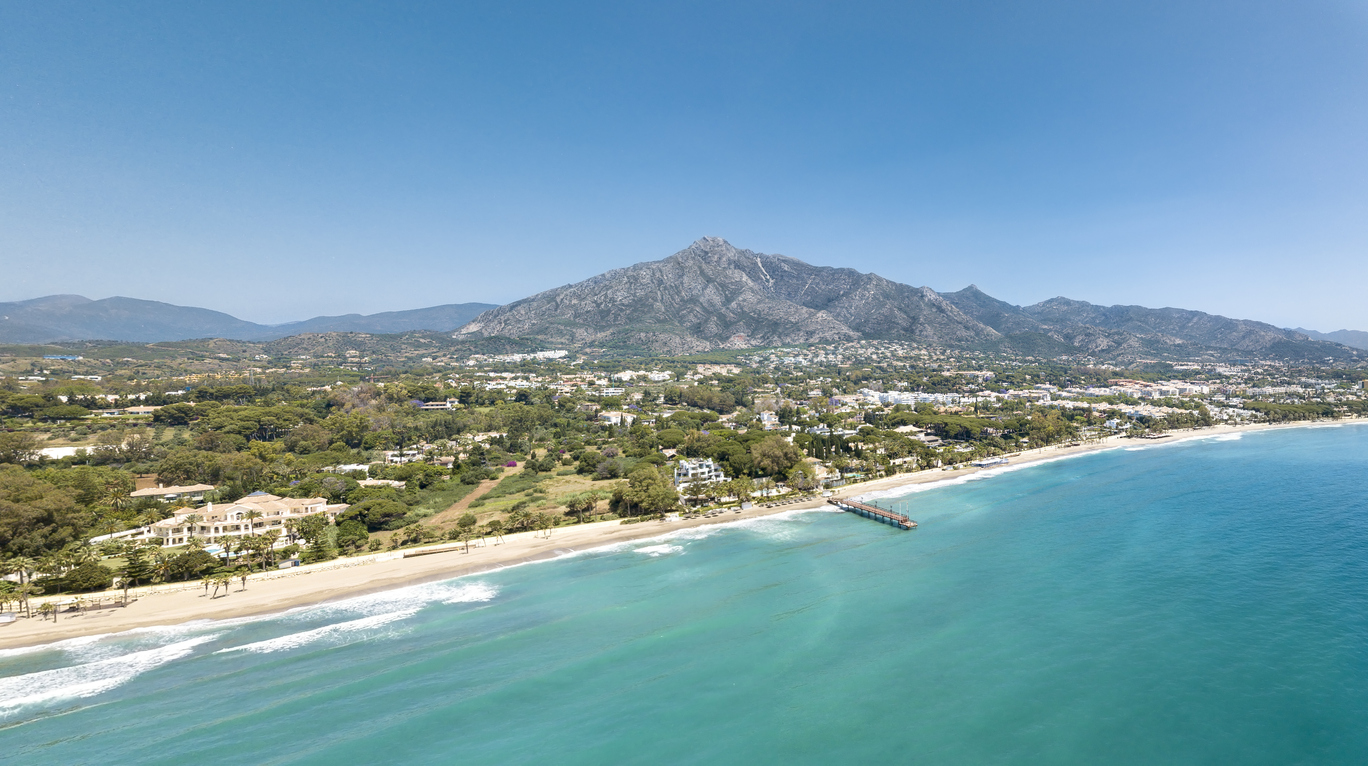
Average temperature in January: 17°C/ 62°F high to 7°C/ 45°F low
Why limit Marbella to the summer?
Winter months in this southern Spanish haven offer a comfortably warm climate, with temperatures often reaching up to 17°C.
Savour authentic Spanish cuisine without competing for a table or waiting in long lines.
You’ll have a better chance of snagging that ocean-view spot you’ve been eyeing, too – although some bars and beach clubs do close for the summer months.
That said, winter months are filled with local events and seasonal activities, such as Christmas celebrations in December or Three King’s Day in early January.
Cooler winter weather is perfect for getting out and about, too. The nearby Sierra Blanca mountains are too warm for walking in the summer, but in winter, they’re perfect.
8. Malaga, Spain
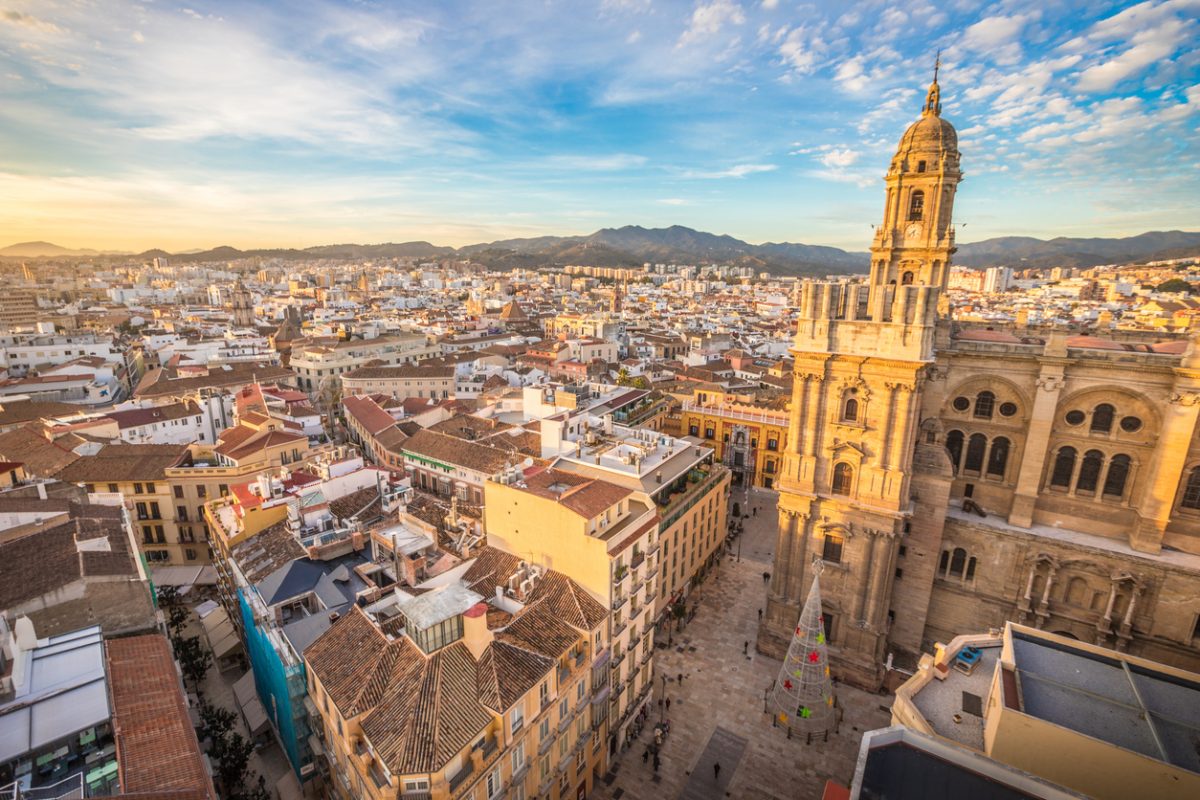
Average temperature in January: 17°C/ 62°F high to 8°C/ 46°F low
If you’re visiting the Costa del Sol, don’t miss Malaga!
This Southern Spanish city offers a wealth of experiences that come alive in the winter.
The city’s Moorish old town doesn’t shut down when the temperatures drop – and they never drop that low anyway.
In fact, the intricate architecture of its historical sites, such as the Alcazaba and Gibralfaro Castle, take on a different, more dramatic character under the winter sky.
Beaches in Malaga are equally inviting, and you won’t have to jostle for space to appreciate the Mediterranean waters – although it is a little cold!
Now, about those temperatures—they hover in a comfortable range, making it ideal for exploring the city on foot.
How does a leisurely stroll through the Picasso Museum sound?
Or perhaps, you’d like to take advantage of fewer tourists and better access to local guides?
And, in all honesty, I couldn’t imagine walking all the way up to the Alcazaba in the hot summer months!
Winter in Malaga also provides the perfect weather for tapas-hopping, and al fresco seating is still open.
Expect similar temperatures to Marbella throughout the winter. In fact, it’s one of the warmest winter city breaks in Europe!
9. Seville, Spain
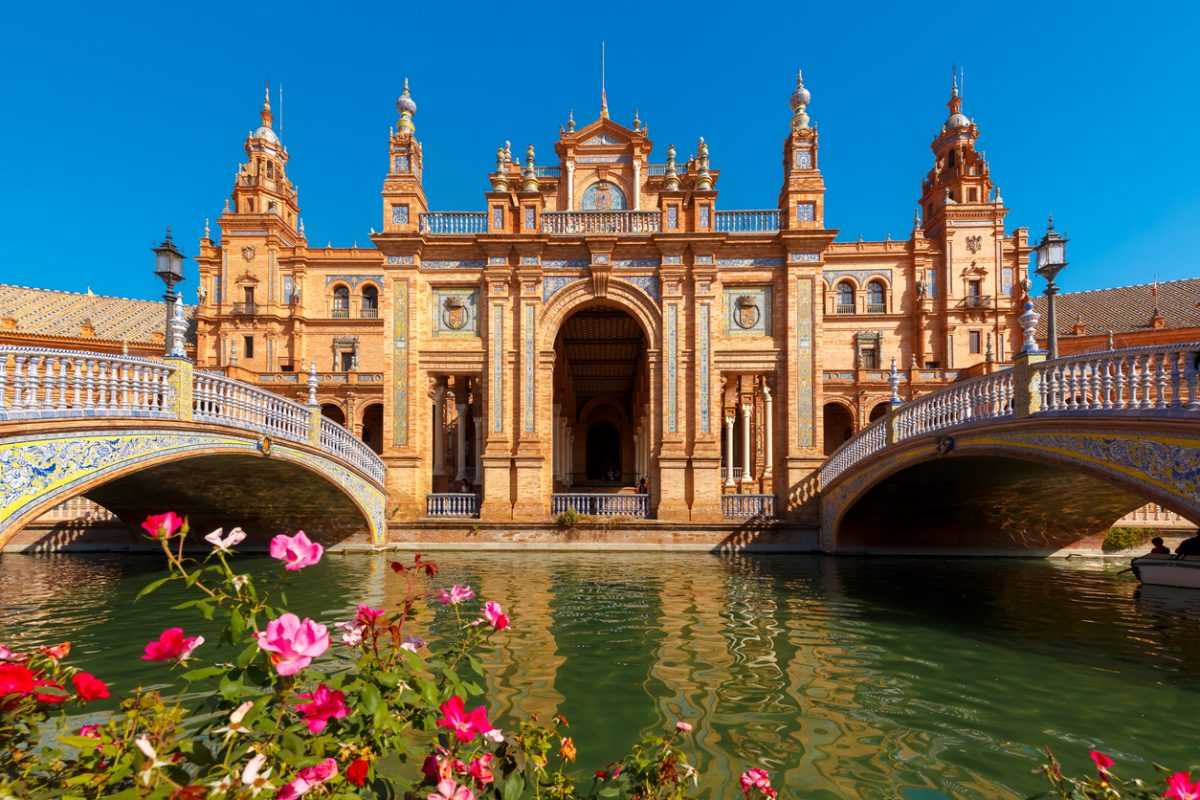
Average temperature in January: 16°C/ 61°F high to 6°C/ 43°F low
Seville: it’s famous for awe-inspiring architecture and some of the juiciest oranges you’ve ever tasted!
Seville in winter is a revelation.
Located in the heart of Andalucia, this city offers a range of attractions without the distraction of peak-season crowds.
Let’s start with the architecture.
The Alcazar of Seville, a palace complex, and the Seville Cathedral are more accessible during the off-season.
What could be better than exploring them without the constant hum of hundreds of tourists?
You’ll have more room to absorb the intricate details, from the tilework to the grandiose arches.
As for those renowned Seville oranges, winter is actually the season to experience them in all their glory.
You’ll walk through the narrow, cobblestone streets with the sweet aroma of fresh oranges filling the air from the trees lining the city’s public spaces.
Then there’s the weather.
With temperatures comfortably hovering in the mid-teens Celsius or early 60s Fahrenheit, you can engage in outdoor activities without breaking a sweat—literally.
Why not take a boat ride along the Guadalquivir River, or perhaps enjoy an intimate Flamenco show in Triana?
When it comes to dining, tapas bars are still buzzing but without the unbearable wait times.
Make sure to taste the authentic Andalusian dishes like salmorejo or flamenquín, along with some local wine to toast to a successful day in Sevilla!
10. Granada, Spain
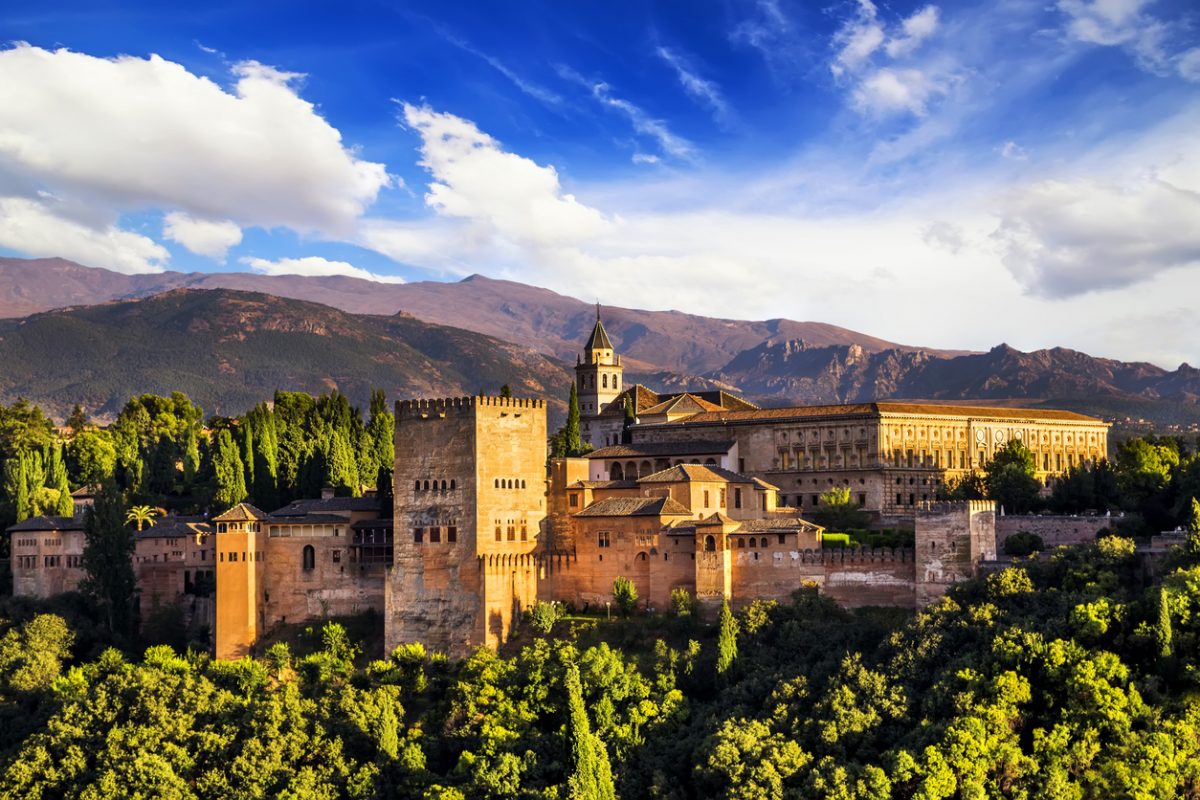
Average temperature in January: 12°C/ 54°F high to -1°C/ 30°F low
Granada: It’s where history meets warmer weather!
Situated in Andalucia, this city is a hub for those interested in the confluence of Moorish and Christian Spain, best exemplified by the iconic Alhambra.
The Alhambra is a historic self-contained city – and there’s no better time to visit this architectural masterpiece than when the crowds have thinned out!
In winter, you’ll enjoy a more personal, reflective experience as you wander through the Nasrid Palaces.
The Generalife Gardens, usually bustling, are more like a private Eden!
Don’t overlook the Sacromonte district either, famed for its whitewashed cave homes and intimate flamenco shows.
With winter temperatures in Granada averaging around 12°C or 54°F (thanks to its slight altitude!), a brisk walk through this hilly area boasts both panoramic city views and a peek into Romani traditions.
Sure, Granada can be cooler than other Andalucian cities, but let’s put it in context.
While much of Europe is shivering and shovelling snow, you’ll be enjoying a gentle Andalucian sun!
As for dining, Granada has a unique tradition: free tapas.
Order a drink at most bars, and you’ll be treated to a complimentary plate of local fare, from succulent olives to hearty stews. And it all feels much more local in winter!
Plus, if you’re seeking some snow, Granada’s only a short hop from the ski slopes of the Sierra Nevada (one of the snowiest places in Spain) – it’s manageable on a day trip. Then you can retreat to sunny Granada to thaw!
11. Barcelona, Spain

Average temperature in January: 15°C/ 59°F high to 9°C/ 48°F low
If you’re scouting for a city break that offers a blend of culture, mild winter weather, and stunning architecture, Barcelona awaits!
Renowned for its Gaudí-designed landmarks, the city shifts into a quieter yet equally engaging gear during the off-season.
The Sagrada Família in winter? It’s a whole different experience.
As sunlight pierces through the basilica’s colourful stained glass windows, the fewer numbers of tourists mean you can appreciate this marvel at a more leisurely pace.
Gaudí’s Park Güell also transforms in the cooler months, its mosaic tiles and serpentine bench radiating a unique vibrancy in the softer light.
Barcelona isn’t just about Gaudí, though.
The Gothic Quarter’s labyrinthine alleys and hidden squares are far more navigable when the crowds have dispersed.
Enjoy a café con leche in a secluded square and watch as locals go about their day, less harried now that the throngs of tourists have thinned.
Thinking about what to wear?
While Barcelona may not offer the balmy temperatures of a tropical winter escape (very, very rarely, it snows) and it’s certainly chillier than Malaga, its location in Spain’s Catalonia region ensures it’s still milder than many other European cities.
Averaging higher temperatures, especially in November, December, and March, Barcelona invites you to explore the city without the burden of heavy winter gear.
Winter is the ideal time to dive into Catalonia’s comfort foods.
From the seasonal calcots—grilled spring onions served with romesco sauce—to warming bowls of escudella, a hearty meat and vegetable stew, the city’s cuisine takes a turn for the cozy during these months.
Eager for something more action-packed? Consider a day trip to the nearby Montserrat mountain range for hiking.
Even in winter, the trails remain largely accessible for hiking.
Combine this with a visit to the Montserrat Monastery, a spiritual sanctuary with a world-renowned boys’ choir.
Check out my full guide to Barcelona in winter!
12. St Tropez, France
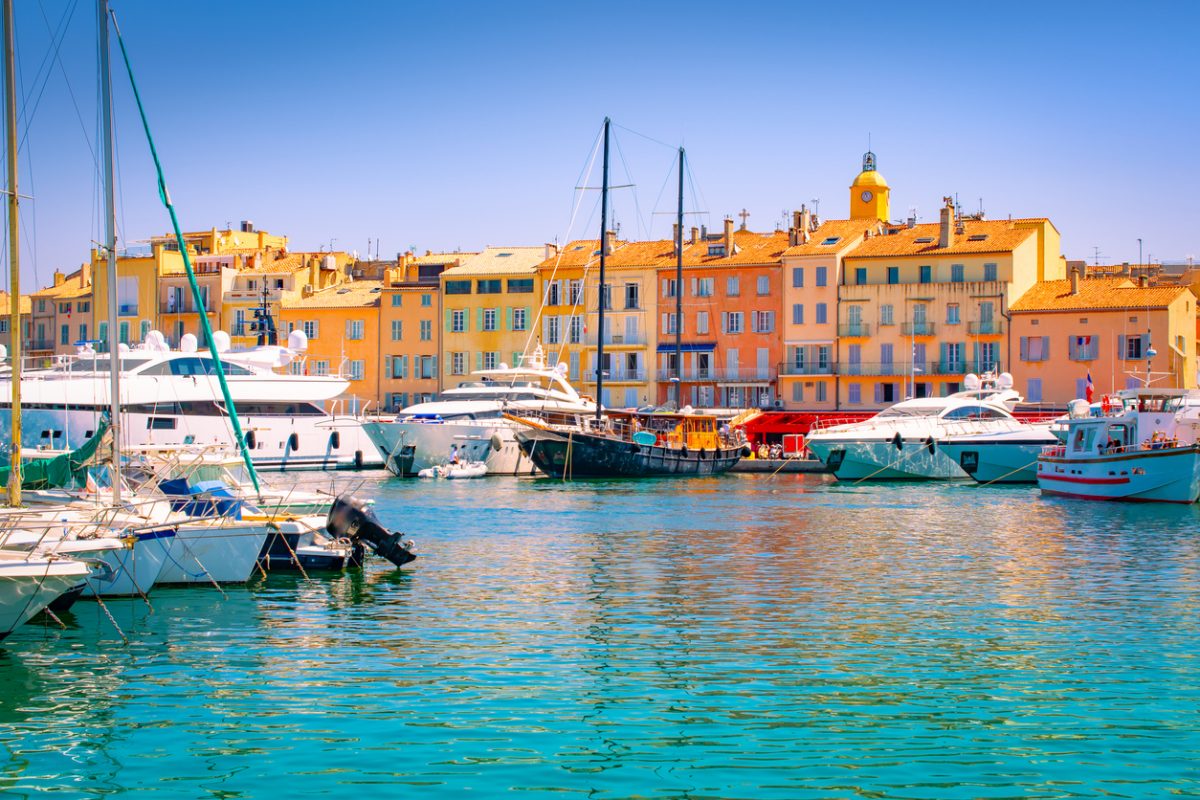
Average temperature in January: 13°C/ 55°F high to 3°C/ 37°F low
St Tropez: the name might conjure images of summer parties and yacht-filled harbours, but have you considered what it has to offer when the mercury dips?
While the jet-set crowd may have departed, the charm of St Tropez remains, along with the bonus of quieter streets!
Even with winter temperatures hovering around 14°C, the region’s azure waters and golden beaches maintain their allure.
For outdoor enthusiasts, the winter months offer an opportunity to enjoy scenic coastal walks or hikes through the surrounding hills.
A local favourite is the Sentier du Littoral, a coastal path that runs from St Tropez to Plage de l’Escalet. This route gives you up-close views of the Mediterranean while also passing by secluded beaches and hidden coves.
What about dining? The renowned culinary scene doesn’t go into hibernation. Many restaurants remain open and have a more intimate setting.
Relish in authentic Provençal cuisine, from freshly baked fougasse bread to rich bouillabaisse, in a much more local atmosphere.
Winter is also a fantastic time to explore the town’s art and culture.
Drop by the Musée de l’Annonciade, which houses a splendid collection of post-Impressionist masterpieces.
Fewer visitors mean you can take your time appreciating the art without feeling rushed or crowded.
13. Marseille, France

Average temperature in January: 12°C/ 54°F high to 4°C/ 39°F low
Marseille in winter’s gloriously refreshing.
Being the second-largest city in France, you might assume it’s all about urban life here.
But what if we told you Marseille’s coastline calls for unhurried walks and the surrounding Calanques beg to be seen?
The Calanques National Park is practically on Marseille’s doorstep.
During winter, trails are quieter and the views are just as stirring!
If hiking isn’t your thing, you might opt for a boat tour.
Yes, these still run in winter and often you’ll find the sea conditions calm and inviting.
Back in the city, the Old Port is a hub of activity year-round.
From sipping a warm pastis in a harbor café to visiting the Fish Market, this area is ripe for people-watching and soaking up the local atmosphere.
With its mix of architectural styles and periods—from the Roman-founded Old Port to the futuristic Museum of European and Mediterranean Civilizations—the city is virtually an open-air museum.
And let’s not forget about Marseille’s gastronomy.
Winter is the season for Bouillabaisse, a local warming fish stew.
Numerous restaurants around the Old Port serve authentic versions of this Provençal classic.
Top tip? If you’re a fan of football, catch a game at the Orange Vélodrome, home to the Olympique de Marseille team. You couldn’t get much more local than this!
14. Nice, France
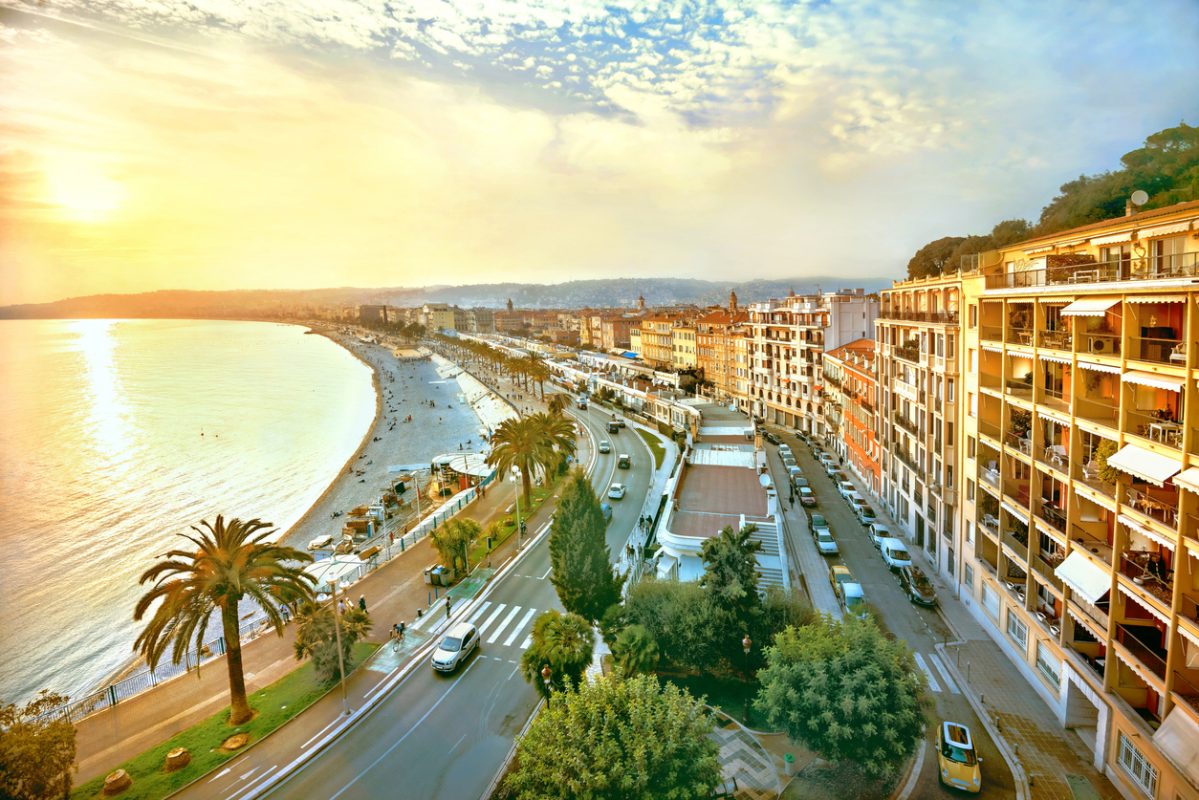
Average temperature in January: 13°C/ 55°F high to 5°C/ 41°F low
Is Paris feeling too chilly? Head to Nice in the southeast of the country, one of the warmest places in France in winter.
With temperatures averaging around 14°C/57°F, you won’t need to layer up here!
Start your journey at the Promenade des Anglais, where you’ll find fewer crowds than in the bustling summer months, and take a leisurely stroll along the beachfront.
What about delving into the city’s deep-rooted history? Founded by the Greeks in 600 BC, Nice’s past is intricately layered and accessible even in winter.
Head to the Old Town, locally known as Vieux Nice.
Meander through narrow, winding streets filled with boutique shops and small cafes.
Here, you’ll find landmarks like the Cathedral of Sainte-Réparate and Place Rossetti – each offers a glimpse into the city’s rich past without the queues or crowds often found in summer.
Nice is also home to the Marc Chagall National Museum and the Matisse Museum, where you can see extensive collections of works by these iconic artists – and of course, they’re a lot quieter in winter!
Are you an outdoor enthusiast? Venture just outside the city for a hike in the Parc de la Grande Corniche.
The park boasts panoramic views of Nice and the Mediterranean – and the cooler weather makes hiking in winter so much more comfortable!
Food afacondio? Nice’s culinary scene doesn’t hibernate in winter.
From socca, a chickpea flour pancake, to salade niçoise, local specialities abound.
You won’t need to make dining reservations weeks in advance, too!
15. Corsica, France
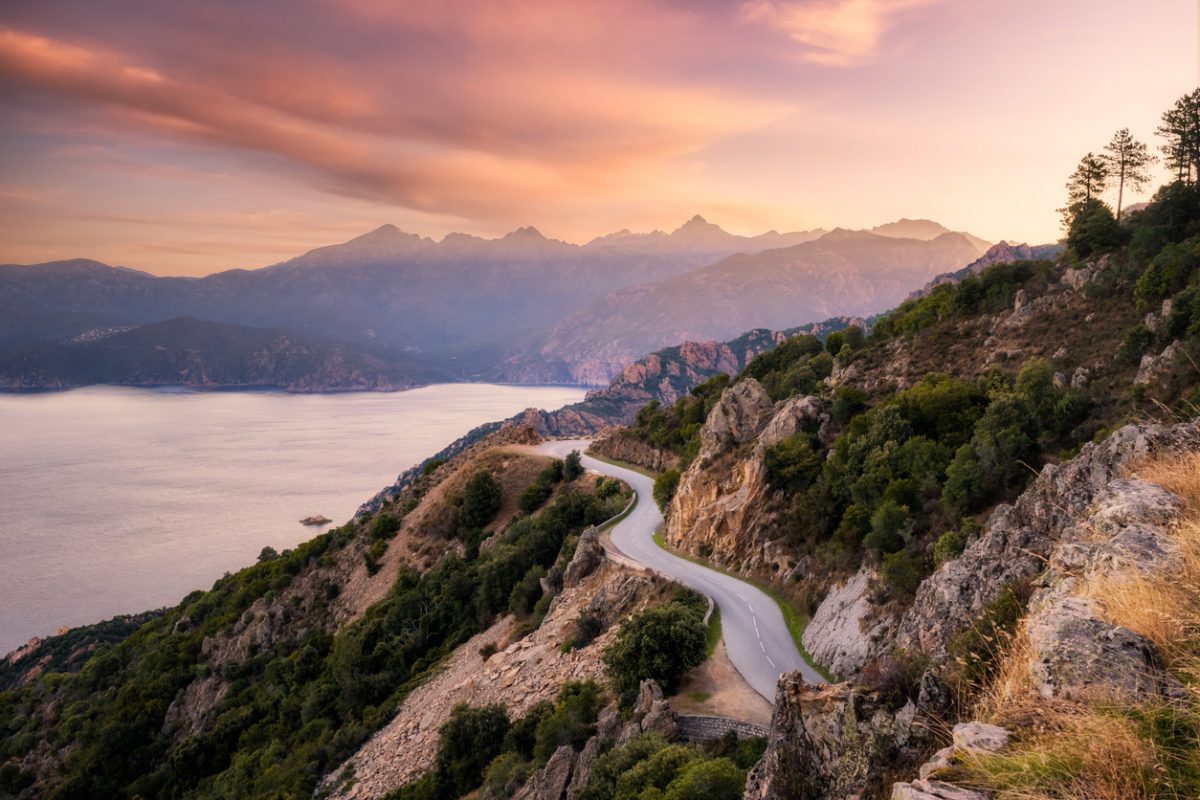
Average temperature in January: 10°C/ 50°F high to 3°C/ 37°F low
Corsica is an island of contrasts.
One of the largest in the Mediterranean Sea, the beaches boast mild temperatures throughout the winter.
Yet, when you look up, you see the snow-capped peaks of the island’s mountainous interior. There are even some ski slopes!
Ski resorts like Ghisoni and Val d’Ese beckon with well-groomed slopes and fewer crowds than you’d find in mainland Europe’s more popular skiing destinations.
But this contrast makes Corsica such an excellent winter destination.
In the lower-lying areas, hiking trails abound, and if you’re feeling really brave, you could even take a dip in the Med.
Don’t miss coastal towns like Ajaccio and Bonifacio, with cobblestone streets, visit historic sites like the Citadelle de Bonifacio, and take advantage of the winter season’s quieter atmopshere to get to know the local culture.
Don’t forget to sample Corsican cuisine. Winter’s an excellent time to try hearty stews and local cheeses, paired with wine of course!
16. Lisbon, Portugal
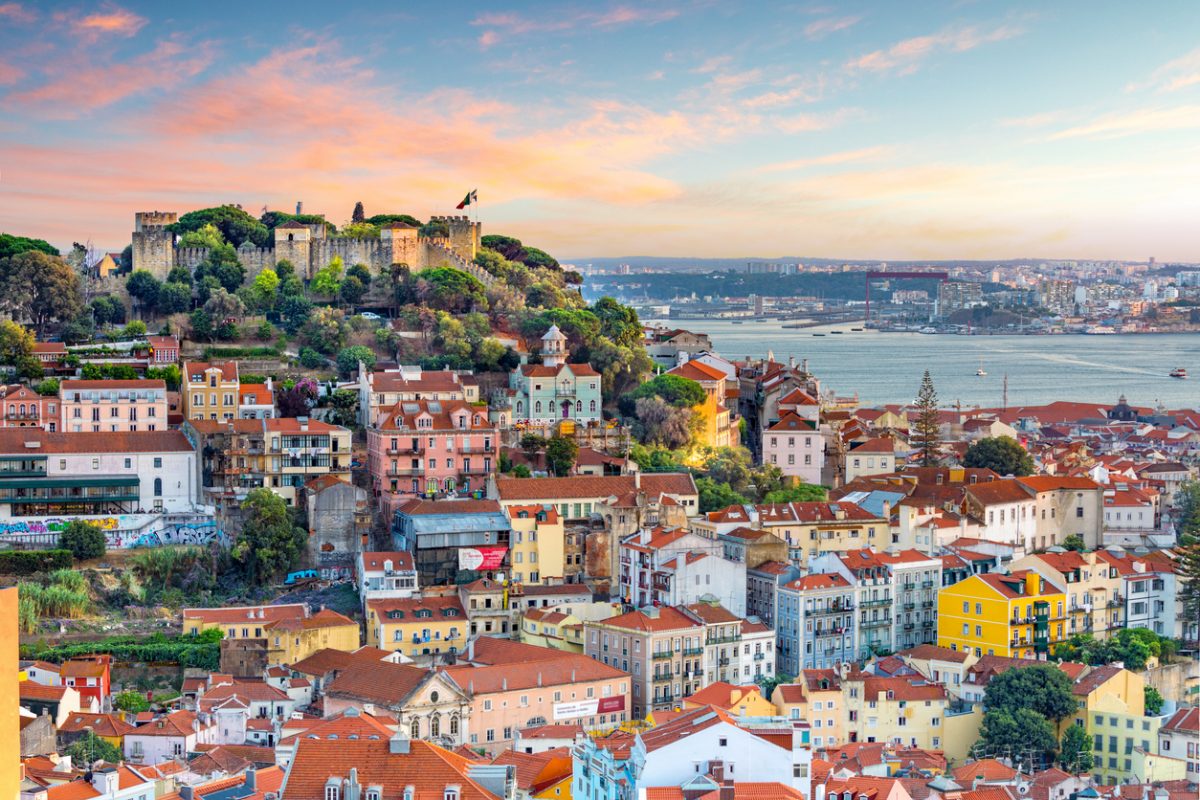
Average temperature in January: 15°C/ 59°F high to 8°C/ 46°F low
Lisbon’s allure certainly doesn’t dim with the seasons!
As the capital of Portugal, Lisbon’s sunny even when winter rolls around.
In fact, when I visited in January, I was walking around in a T-shirt, and snow is virtually unheard of.
What, then, makes a winter trip to Lisbon worthwhile?
First, let’s talk about the city’s atmosphere.
Lisbon has a cool, invigorating vibe, irrespective of the season.
In winter, you can soak up this culture without the tourist crowds you might encounter in summer!
Meander through the Alfama district to experience its labyrinthine streets or take a side trip to Belém to see its iconic tower.
Don’t miss the traditional Pasteis de Belém, too (the original Pastels de Nata) – the queues are intense in the summer, but it’s much quieter in winter time!
Talking of Lisbon’s culinary scene, winter means fewer people vying for a table at the city’s famed restaurants.
I love Damas, a Portuguese tapas restaurant; queues are long in the summer, but it’s much quieter in the winter!
You could also head to a table at a Fado restaurant like A Severa for dinner accompanied by the soul-stirring melodies of this traditional Portuguese music.
Are you a fan of history?
Besides the famous Belém Tower, you have the ornate Jerónimos Monastery and the São Jorge Castle with panoramic views of the city.
Because the winter months attract fewer tourists, these sites will be much more relaxed!
Check out my full guide to Lisbon in winter – it’s one of my favourites!
17. The Algarve, Portugal
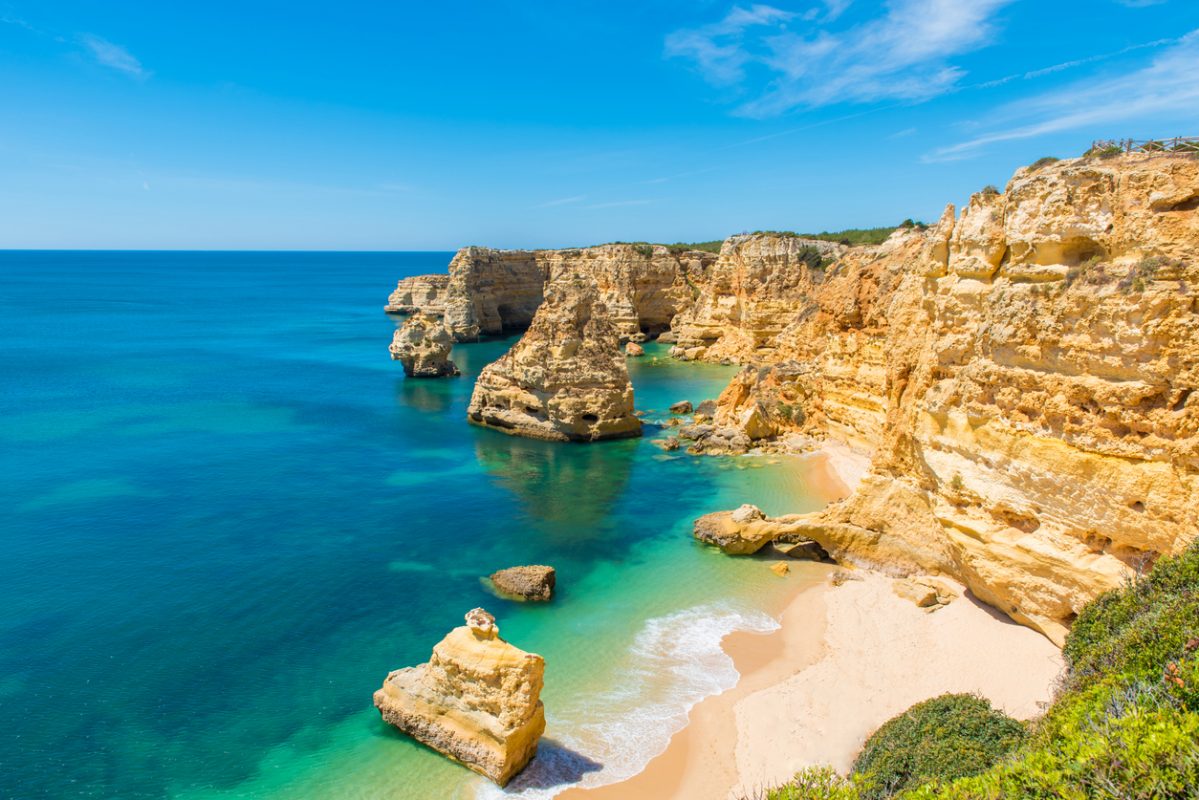
Average temperature in January: 17°C/ 63°F high to 8°C/ 46°F low
Winter in the Algarve?
You might be thinking it’s a beach paradise best enjoyed in the heat of summer, but the Algarve has plenty of charm in the winter.
Particularly in towns like Faro and Lagos, there’s more to do than simply lounge on the sand—although the beaches are indeed stunning!
The historical architecture in Faro, such as its imposing cathedral (worth hiking to the top if you can!) , is ideal for a mild afternoon. Don’t miss Faro Archaeological Museum to get an in-depth look at the area’s rich history.
Meanwhile, Lagos is known for its maritime heritage, embodied by the Ponta da Piedade—a stunning group of rock formations that have been sculpted by the sea over millennia.
Now, you won’t be spending too long on the beach in December, but the weather will likely be mild enough for enjoyable walks along the coast.
Take a sunlit afternoon stroll on the Algarve’s dramatic cliffs, overlooking the Atlantic.
The absence of summer crowds gives you the freedom to find a secluded spot, pull out a blanket, and watch the waves crash against the shore. It’s an experience that feels both tranquil and invigorating!
Foodies, this is your moment.
The Algarve’s culinary scene is in full swing year-round, but winter means you can enjoy a meal without the usual wait for a table.
For seafood aficionados, this region is a treasure trove.
Try a plate of amêijoas à bulhão pato, a classic Portuguese clam dish, in one of Lagos’s authentic eateries.
Or, if you find yourself in Faro, don’t miss a chance to indulge in some local oysters!
Check out some of the best reasons to visit the Algarve in January!
18. Madeira, Portugal

Average January temperature: 18°C/ 64°F to 12°C/ 54°F
Who says Madeira is just for summer adventures?
Southwest of Portugal and just north of the Canary Islands, this Atlantic archipelago is prime for a winter escape.
While most of Europe dons heavy coats and snow boots, Madeira stays pleasantly warm.
The winter months bring out a unique character of the island that’s not to be missed!
In Madeira in winter, you can hike alongside cliffs that drop dramatically into the ocean; or travel to the highest peaks on the island with the PR1 Vereda do Areeiro trail.
If you prefer the beach, the Prainha de Caniçal is a secluded spot perfect for enjoying the sun’s rays without the crowds.
As you wander through the streets of Funchal, Madeira’s capital, you’ll notice a distinct festive spirit come December.
The city’s streets are adorned with twinkling lights and ornate decorations; the warmth doesn’t make it feel any less festive than elsewhere in Europe!
But don’t just admire the scenery—indulge in Madeira’s unique culinary offerings too!
Bolo do caco, a traditional Madeiran garlic bread, is a must-try.
Enjoy it at a local café, perhaps paired with a glass of Madeira wine.
19. Azores, Portugal
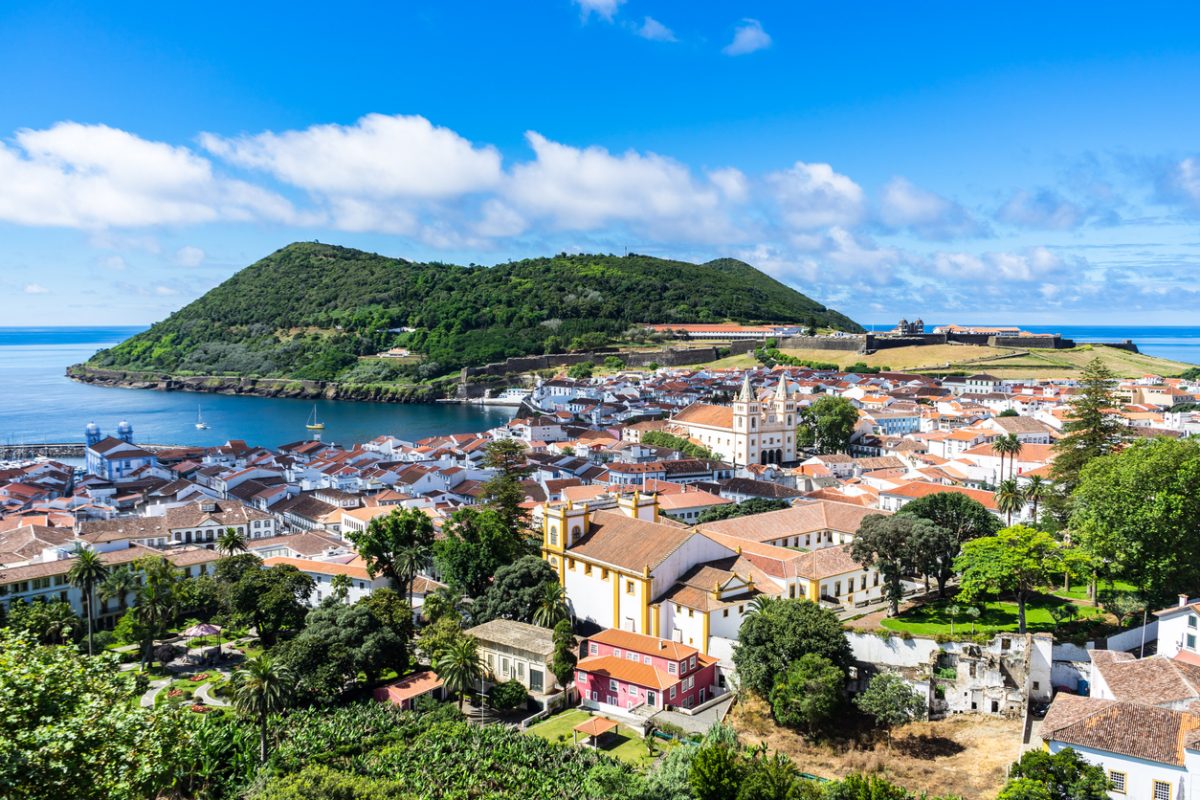
Average January temperature: 17°C/ 62°F to 12°C/ 54°F
The Azores should top your list for winter sunshine in Europe.
Located in the mid-Atlantic and governed by Portugal, this archipelago has mild winter temperatures that rarely dip below 57°F (14°C).
While the Azores might conjure images of water-based adventures—and rightfully so— there’s plenty to enjoy on-land too!
How about hiking up Mount Pico?
This dormant volcano (and Portugal’s tallest peak) has a rewarding vista of clouds mingling with neighbouring islands from the top.
The trail’s challenging but well-marked.
Or, head to Sete Cidades Lake, located in a dormant volcanic crater.
The area around this lake encompasses multiple hiking opportunities, each with different views of the contrasting blue and green waters.
Local legends romantically claim were created from the tears of a shepherd and a princess forbidden to be together.
Water-based activities aren’t off-limits in winter, either.
Thanks to the Azores’ location at the confluence of three tectonic plates, marine life here is abundant – it’s a prime location for whale and dolphin watching!
Surfing also has a unique charm, with winter swells attracting fewer crowds, giving you more space to enjoy the waves!
In quieter moments, stroll through Angra do Heroísmo, a UNESCO World Heritage site.
Its well-preserved Renaissance architecture is well worth seeing!
20. Sorrento, Italy
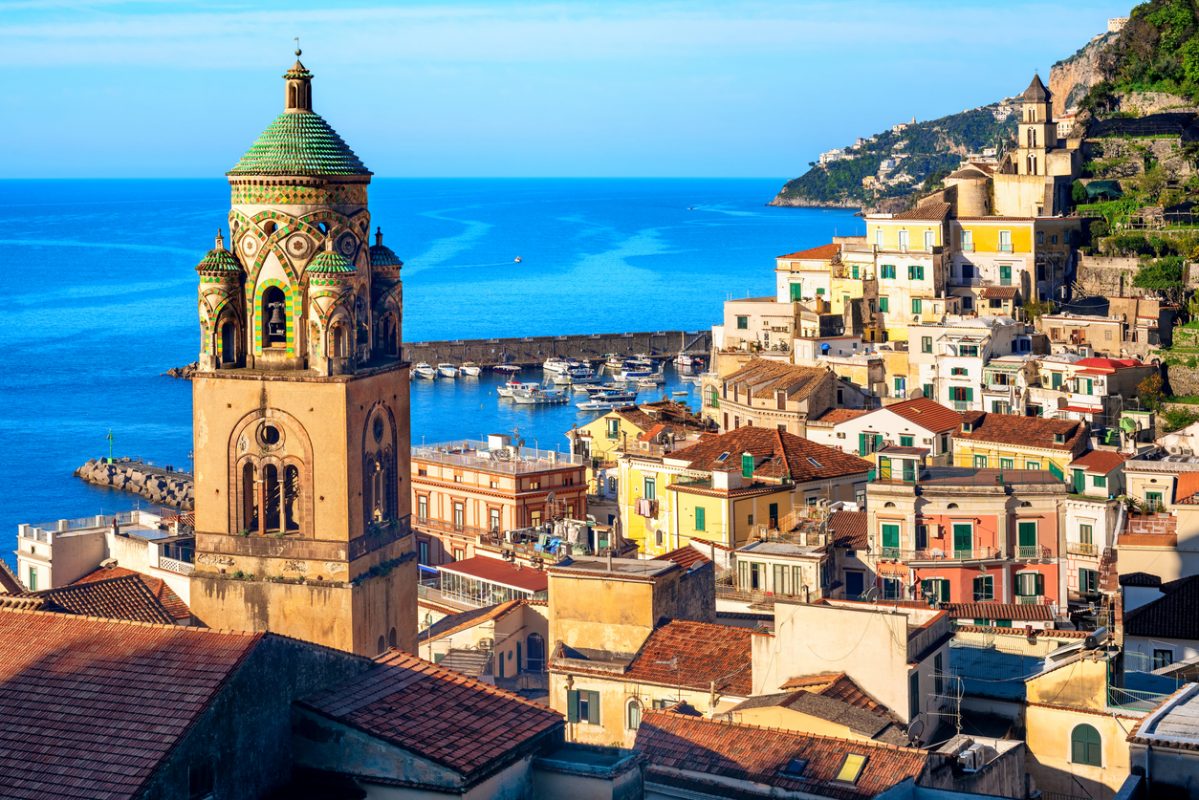
Average temperature in January: 16°C/ 61°F high to 11°C/ 51°F low
In Sorrento, the warmth of the Italian sun combines effortlessly with the allure of history.
Perched on cliffs overlooking the Bay of Naples, Sorrento draws sun-seekers in the summer – but winter here has its own allure.
In the town’s maze-like historic center, you can wander through the narrow streets, each lined with artisan shops offering local crafts like inlaid woodwork and limoncello.
The crisp winter air enhances the tangy aroma of the famous Sorrento lemons, as they’re harvested from November to March. Don’t pass up the opportunity to sip limoncello in the place it originated!
Visiting the Cathedral of Sorrento or the tranquil Chiostro di San Francesco gives you a sense of the town’s deep-rooted history.
The smaller crowds of winter make these sights feel more intimate.
Feeling adventurous? The cooler winter air is ideal for taking the Path of the Gods, a hiking route that offers panoramic views of the Amalfi Coast.
Of course, you can also enjoy the Amalfi Coast’s best villages without other tourists!
Ferries to Capri operate year-round, offering you a chance to see the Blue Grotto without the summer throngs.
Even without the thrum of tourists, Sorrento remains a bustling local community in winter.
Shops and restaurants remain open, and you can enjoy the region’s signature dishes, like gnocchi alla sorrentina, in a quieter setting.
21. Naples, Italy
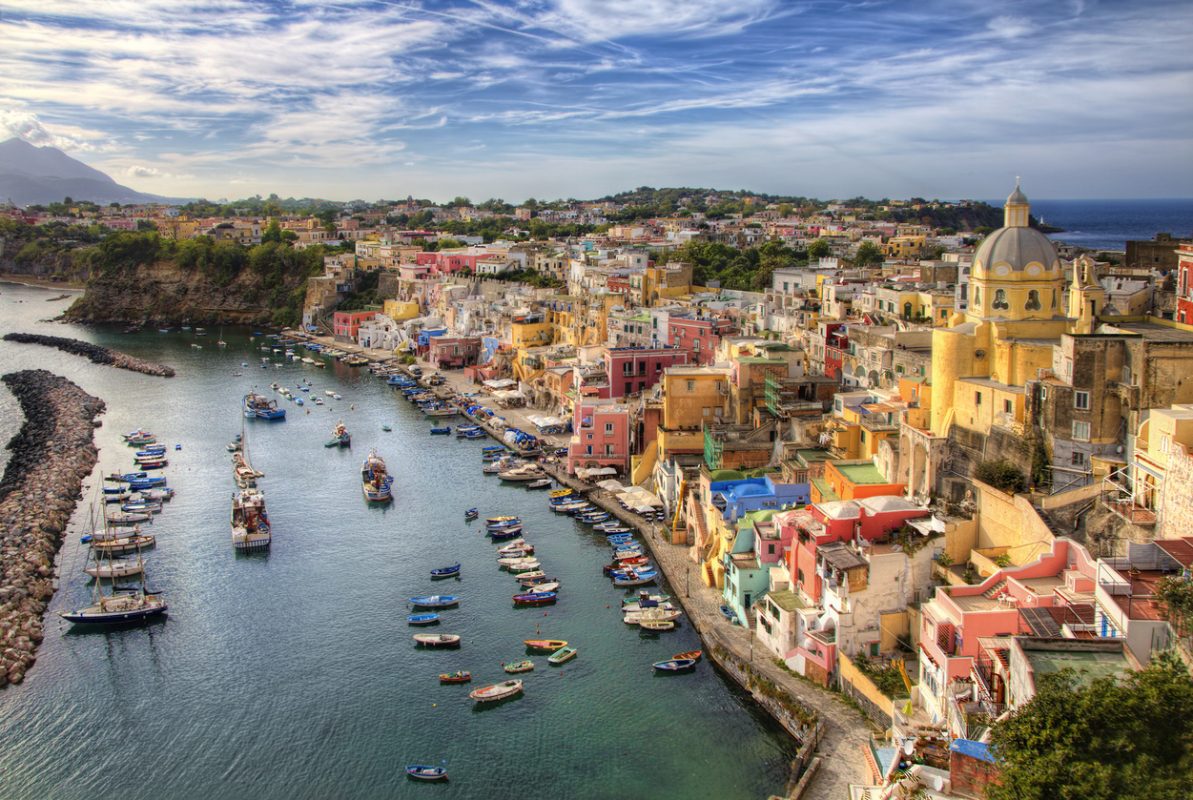
Average temperature in January: 14°C/ 52°F high to 6°C/ 43°F low
What makes Naples such an intriguing winter destination?
Could it be the allure of its culinary scene, the history etched into its streets, or perhaps its position as a gateway to some of Italy’s most stunning landscapes?
As the birthplace of pizza, it’s unsurprising that one of the best things to do in the city is eat – but there’s so much more to offer as well.
Winter temperatures hover around a manageable 13°C (55°F), so you can walk the city’s chaotic yet charming streets comfortably.
The historic district is a UNESCO World Heritage site, dotted with Baroque churches and underground catacombs.
The air is tinged with the scent of freshly brewed espresso emanating from countless cafés, mixing with the aroma of freshly baked pizzas from wood-fired ovens.
Don’t miss trying a classic Margherita pizza where it all began!
Naples also serves as a springboard to other Southern Italy locations.
Mount Vesuvius and the ancient ruins of Pompeii and Herculaneum are all possible on a day trip.
Feeling arty? In the winter season, you can explore the city’s museums at your leisure!
The National Archaeological Museum hosts an extensive collection of Roman artefacts, while contemporary art is showcased in the Madre Museum.
And of course, there’s the coast.
While the beaches might be too chilly for a swim, they provide a peaceful backdrop for winter strolls.
The towns of Amalfi, Positano, and Ravello are just a ferry ride away.
These picturesque locations are far less crowded in winter – experience their beauty without the summer buzz!
22. Sicily, Italy

Average temperature in January: 15°C/ 59°F high to 10°C/ 50°F low
Why visit Sicily in winter?
Delectable cuisine, echoes of ancient civilizations and the dramatic landscapes all beckon!
Situated at the southern tip of Italy’s “boot,” Sicily’s geographical location grants it a mild winter climate, with average high temperatures hovering around 12°C.
With Sahara winds, you might even experience a balmy 20°C!
While many flock to Sicily in summer for its beaches, the winter season reveals a different yet equally enthralling side of the island.
With less-crowded trails, winter is the ideal time for a guided hike around Mount Etna – although the higher you go, the chillier it’ll be!
Food is an integral part of Sicilian culture.
From Palermo’s bustling street food markets to fine dining in Taormina, winter’s a time for comfort foods!
Think hearty pasta dishes like Pasta alla Norma or traditional fish stews.
Freshly caught seafood graces many a plate, while locally grown citrus fruits find their way into both savory dishes and desserts.
For a slice of history, visit the 5th-century Valley of the Temples in Agrigento or Syracuse, with its ancient Greek theater and Roman amphitheatre.
Fancy island hopping? The Aeolian Islands are just a ferry ride away from Sicily.
Though some hotels and restaurants close during winter, the islands are a sanctuary for those seeking solitude!
23. Sardinia, Italy
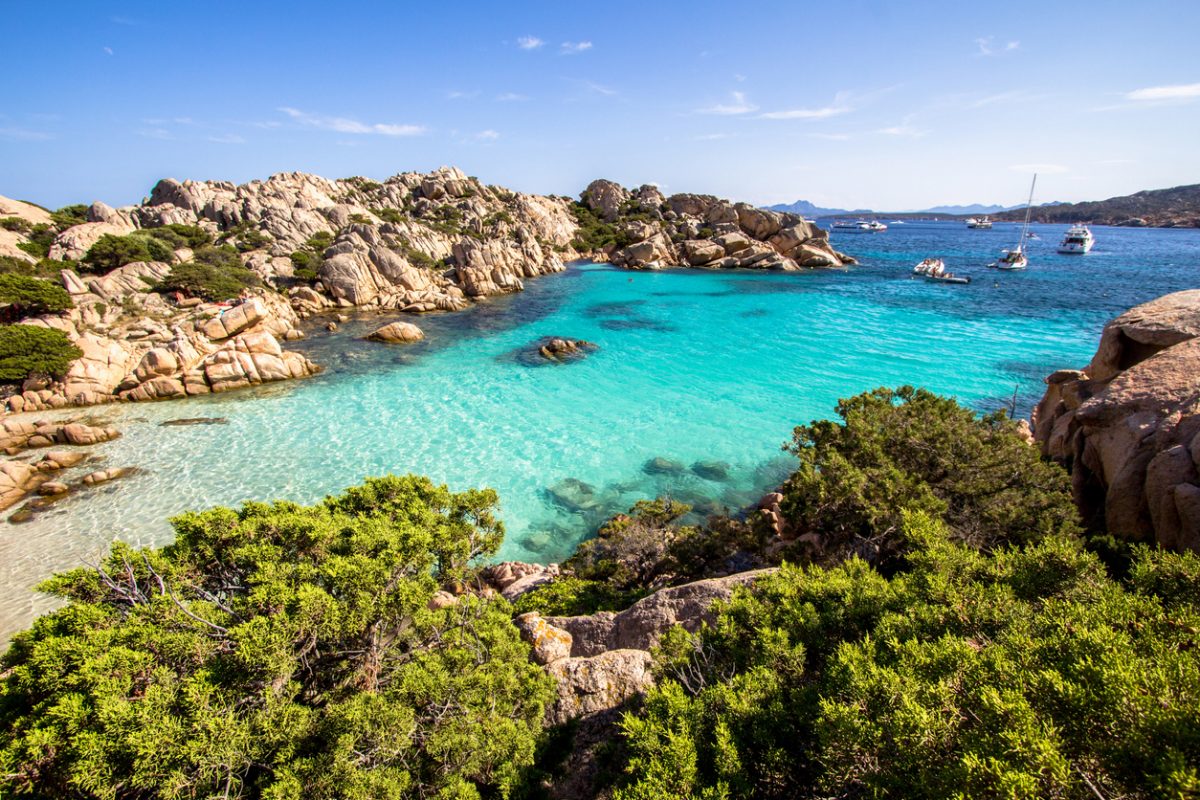
Average temperature in January: 14°C/ 57°F high to 5°C/ 41°F low
The Italian island of Sardinia mirrors its French neighbour, Corsica, with both mountainous terrains and alluring beaches.
While the winter season is on the shorter side, temperatures can still dip, but they’re balanced by an abundance of sun!
If you’re looking for outdoor activities that don’t involve the beach, Sardinia has you covered.
Caligari, the capital city, is a cultural hub filled with historical landmarks and an inviting food scene.
A winter visit means fewer crowds as you explore sites like the medieval Castello district or the Roman amphitheater.
Venturing beyond the capital, you’ll find the Nuragic ruins.
These Bronze Age structures dot the Sardinian landscape and offer a glimpse into the island’s ancient past.
Fancy a hike? The Gennargentu National Park offers trails that navigate through Sardinia’s rugged interior. The trails range in difficulty, making it accessible for hikers of all levels.
Sardinia is also renowned for its beaches, and while swimming may not be on the agenda, a winter beach walk can be invigorating enough!
The coastline stretches for nearly 2,000 kilometers, so there’s a beach for everyone.
Whether it’s the quartz sands of Mari Ermi or the boulder-strewn coves near Baunei, you’ll love the coastline here!
Hungry after your hike? From spit-roasted meats to pasta dishes like malloreddus (Sardinian gnocchi), winter cuisine is rich and fulfilling. And don’t miss to the local wines and pecorino cheese!
24. Dubrovnik, Croatia
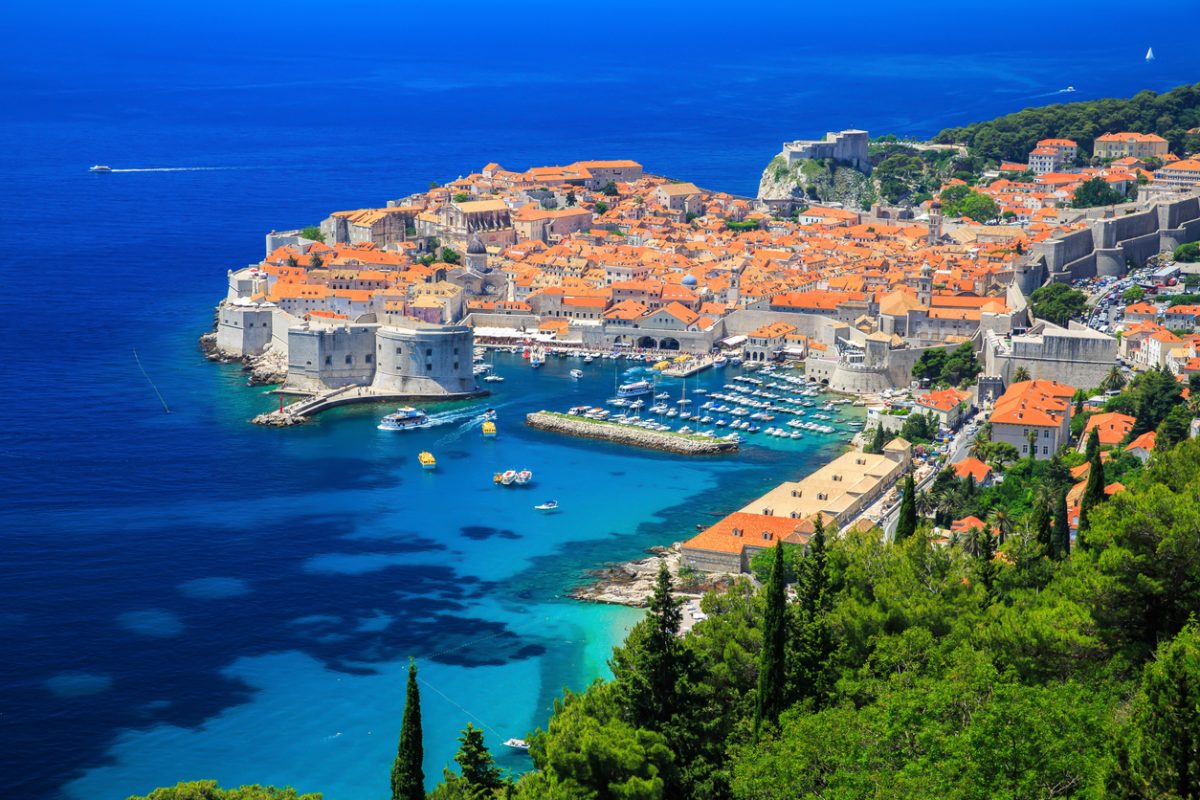
Average temperature in January: 13°C/ 55°F high to 7°C/ 45°F low
Croatia’s Dubrovnik offers a distinct advantage for winter travelers—diminished crowds.
If you’ve heard about (or experienced) the city’s struggles with over-tourism during the summer, you’ll know how much of a perk this is!
The Old Town, encased by formidable medieval walls, is a must-see.
You’ll absorb the intricate blend of Gothic, Renaissance, and Baroque architecture without the buzz of summertime tourists.
Popular spots like Rector’s Palace and Sponza Palace, which usually have long waiting lines, can be explored at a much more leisurely pace!
Beaches around Dubrovnik don’t close just because it’s winter.
While you might not be laying out in a swimsuit, Banje Beach, located near the Old Town, boasts not only scenic views but also gives you a different perspective of the city walls.
For fans of the TV show Game of Thrones, Dubrovnik serves as the real-world stand-in for King’s Landing.
Several key scenes were filmed at locations like Fort Lovrijenac and the city walls.
Got a few more days in Dubrovnik? Venture beyond the city, to the Elafiti Islands.
A short ferry ride takes you to this archipelago, which is especially quiet during the winter months.
Here, you’ll find hiking trails and secluded beaches, as well as the opportunity to sample local cuisine at the few restaurants that remain open.
Speaking of Croatian cuisine, don’t miss hearty stews, fresh oysters, and black risotto, a local dish made from squid ink.
Check out my full guide to visiting Dubrovnik in winter.
25. Kotor, Montenegro
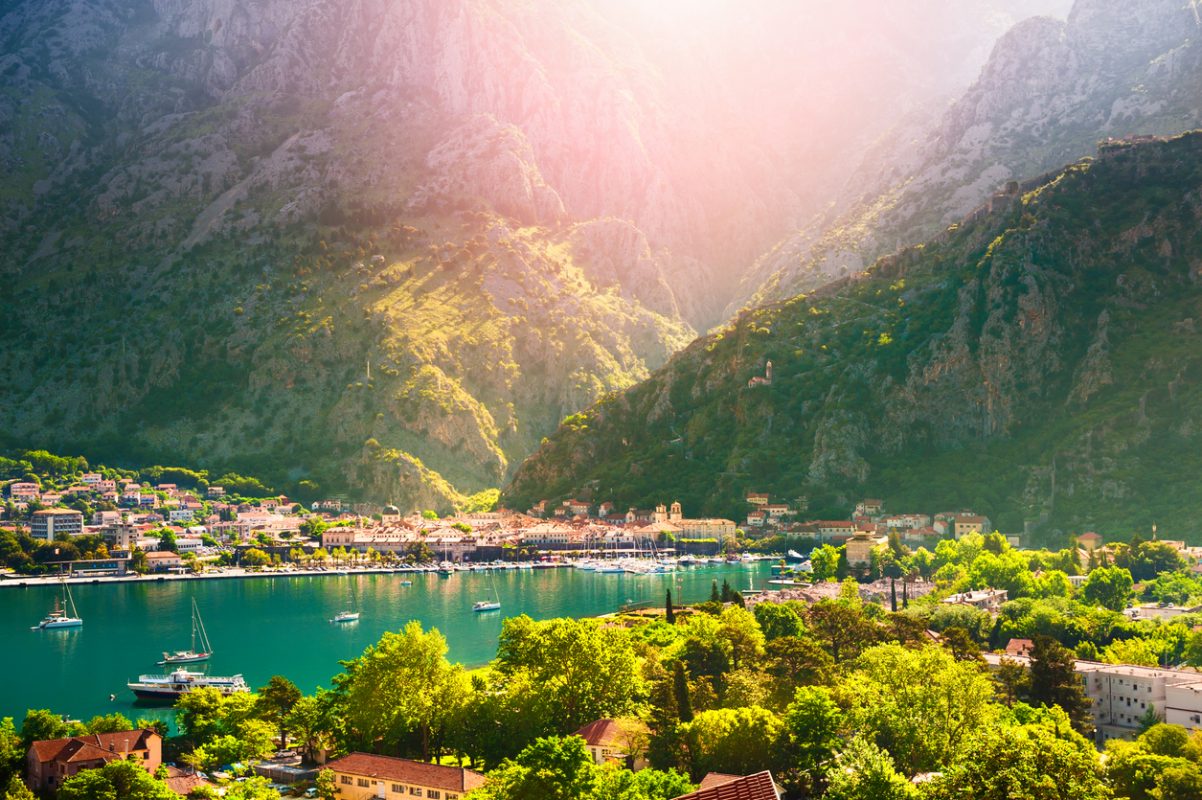
Average temperature in January: 12°C/ 54°F high to 2°C/ 36°F low
Kotor, situated along Montenegro’s Adriatic coast, is punctuated by its well-preserved Old Town and generous sunshine.
While not a typical beach destination in January, the city’s milder climate and sunlit days make it inviting for travelers seeking a different kind of winter getaway.
The Old Town of Kotor is a labyrinth of narrow lanes and cobblestone squares.
Enclosed within 9th-century fortifications, this UNESCO World Heritage site remains relatively quiet in winter.
Stroll through its streets and take in the architectural history, where Venetian palaces stand alongside medieval churches.
A must-see is the Cathedral of St. Tryphon, an 11th-century Romanesque structure with exquisite frescoes.
Directly behind the Old Town, the hillside looms with the formidable Kotor Fortress.
A winter hike up the steep, stone path rewards you with panoramic views of the Bay of Kotor.
Although it can be challenging, the hike is worth the effort; just be sure to wear sturdy shoes and carry water!
If you’re into maritime history, the Maritime Museum describes region’s naval traditions.
Exhibits feature a variety of artefacts, from ancient ships to sailor uniforms. It’s a great indoor option if the weather’s not so great!
26. Sarande, Albania
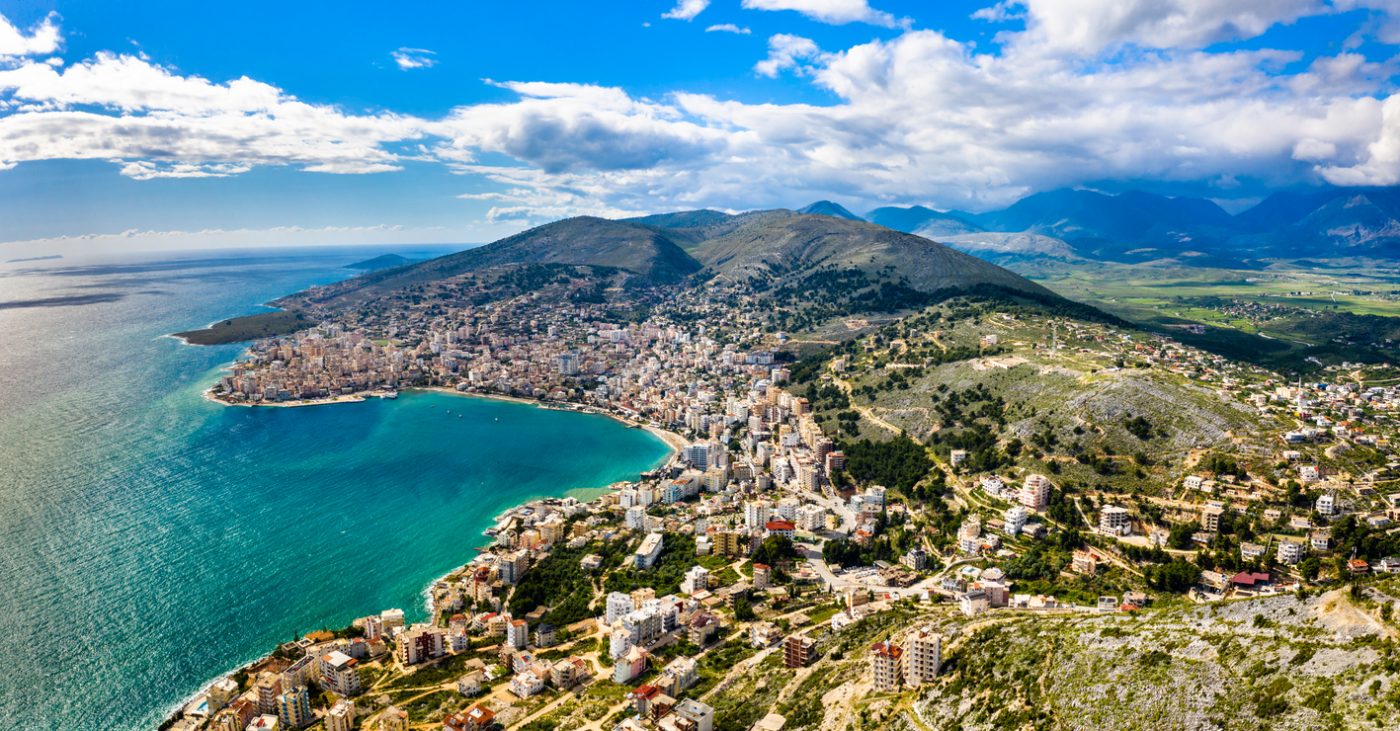
Average temperature in January: 12°C/ 54°F high to 1°C/ 34°F low
Tucked away in southern Albania, Saranda is a refreshing break from the typical winter tourist trail.
This harbour city sits opposite the Greek island of Corfu, and it’s equally warm!
The promenade along the waterfront is the city’s pulse, coming alive with a blend of locals and travelers soaking up the milder temperatures.
Walking along the Ionian Sea, you can observe fishing boats returning with the day’s catch.
The promenade is also lined with eateries that serve freshly caught seafood.
When it comes to historic sites, the nearby ruins of Butrint should be on your list.
A short drive from Saranda, Butrint is an archaeological site that spans different civilizations, from the Greeks to the Romans to the Byzantines.
You’ll find amphitheatres, basilicas, and ancient city walls here.
Mirror Beach is another noteworthy spot.
The colder months often lead to calmer waters, turning the bay into a glass-like surface that’s picture-perfect for photography.
For a panoramic view of the city and the coastline, take a trip to Lëkurësi Castle, located on a hill overlooking Saranda.
It’s a relatively easy climb, and from the top, you get an unobstructed view of Corfu in the distance.
Saranda also offers local markets featuring handcrafted goods, from woven textiles to handmade jewelry, with special Christmas markets in December.
27. Rhodes, Greece
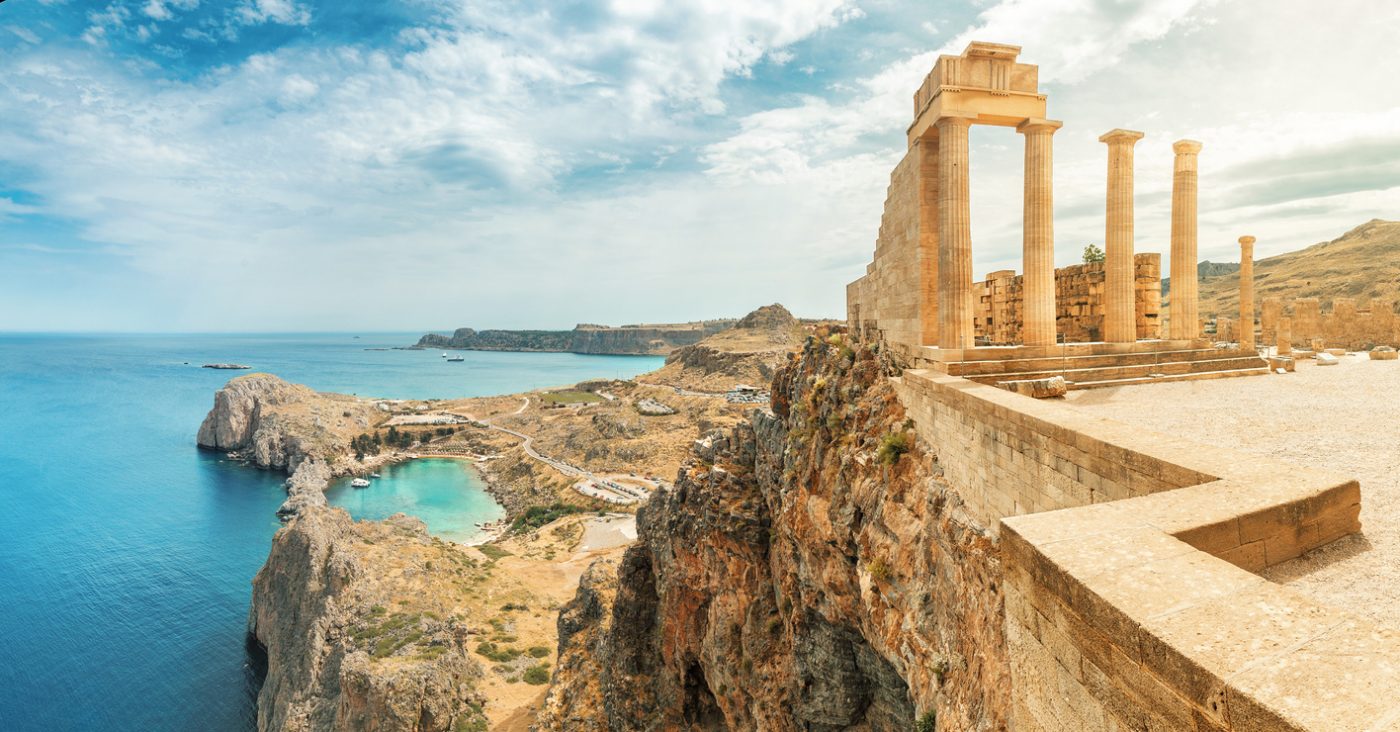
Average temperature in January: 14°C/ 57°F high to 9°C/ 48°F low
Strategically located near southern Turkey, Rhodes serves as a sun-soaked paradise in the winter!
The island boasts daytime temperatures that peak at around 15-16°C, making it ideal for outdoor activities.
You could even take a day trip to Marmaris in Turkey!
Begin your stay with a trip to the Palace of the Grand Master, an iconic medieval castle at the heart of Rhodes Town.
Its cobblestone streets and fortified walls transport you back to the times of knights and ancient civilizations.
Being less crowded in winter, you have the luxury of roaming the castle and its museum without the usual tourist buzz.
For beach enthusiasts, Tsambika Beach is a haven of golden sand and crystalline water.
While winter may not be the best time for swimming, the surrounding landscapes offer ample opportunity for hiking.
From the summit of Tsambika Monastery, you’re treated to an expansive view of the Aegean Sea.
If history intrigues you, the ancient city of Kamiros is a must-visit. Once a major city-state, Kamiros offers an extensive archaeological site.
Stroll through remnants of homes, public buildings, and a remarkably well-preserved aqueduct.
For a traditional meal, opt for moussaka or souvlaki at a local taverna, usually less busy in the winter months.
But if you want a quick bite while exploring, bakeries around the island offer ‘spanakopita’, a savory spinach pie, which serves as a delicious on-the-go snack.
28. Cyprus
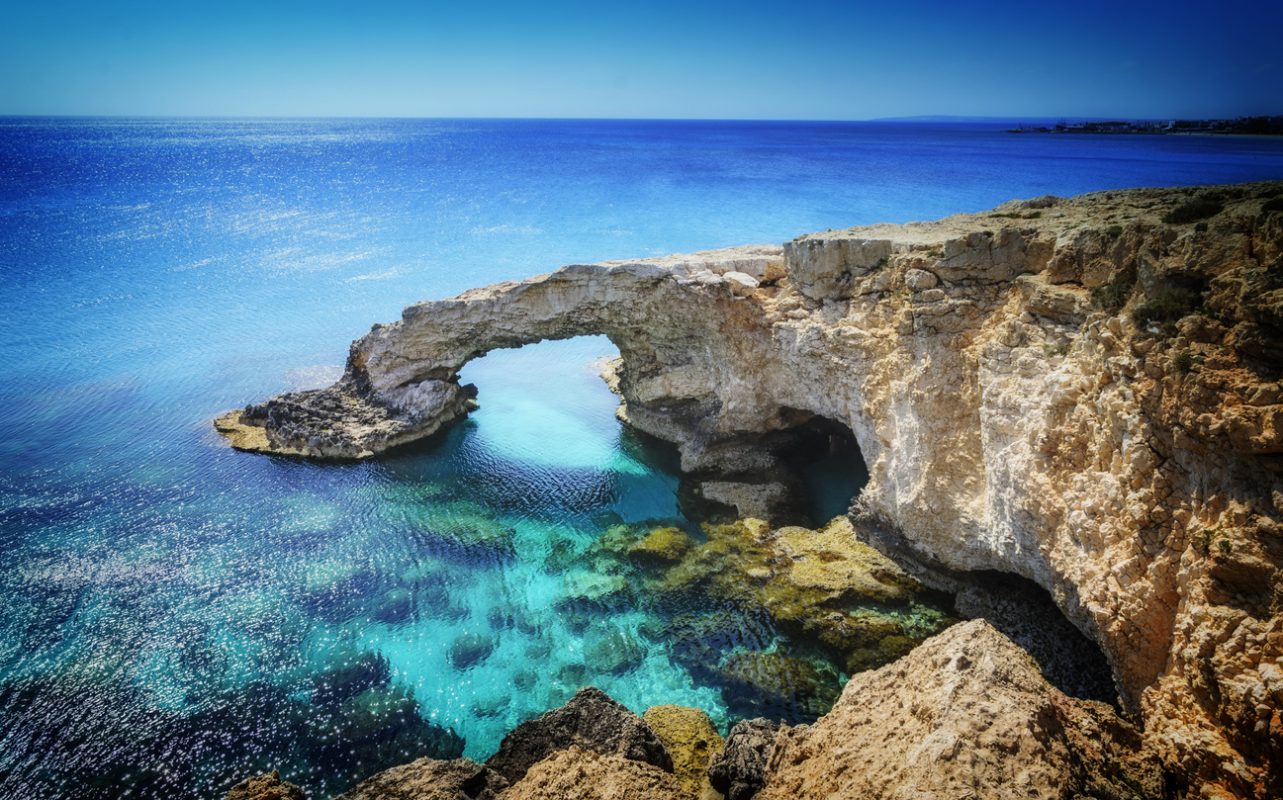
Average temperature in January: 16°C/ 61°F high to 8°C/ 46°F low
Cyprus is a versatile destination where year-round warmth complements a blend of cultural experiences and scenic landscapes.
Its compact size means you can explore multiple cities in a single trip.
Starting with Paphos, this city lays claim to ancient ruins such as the Tombs of the Kings and the Paphos Archaeological Park.
Amidst the historical sites, you’ll find numerous cafes and restaurants where you can indulge in Cypriot specialities like grilled halloumi or souvlaki.
Head east to Ayia Napa; its clubs are less bustling in the winter but you can still enjoy a tranquil evening at a beachfront taverna!
Take advantage of the mild winter weather by exploring the nearby Cape Greco National Forest Park.
Further down the coast, Larnaca has an iconic Salt Lake, which during winter is home to migratory flamingos.
Stroll along Finikoudes Beach, lined with palm trees, or visit the 9th-century St. Lazarus Church for a dash of historical architecture.
The city also houses one of the island’s major airports, making it a convenient starting or ending point for your trip.
Last but not least, Nicosia stands as Europe’s last divided capital, split between Cyprus and North Cyprus, which is governed by Turkey.
Here, you can visit the Venetian Walls and Ledra Street, a bustling shopping district that straddles the border.
You could even cross into North Cyprus for a completely different experience!
29. Malta
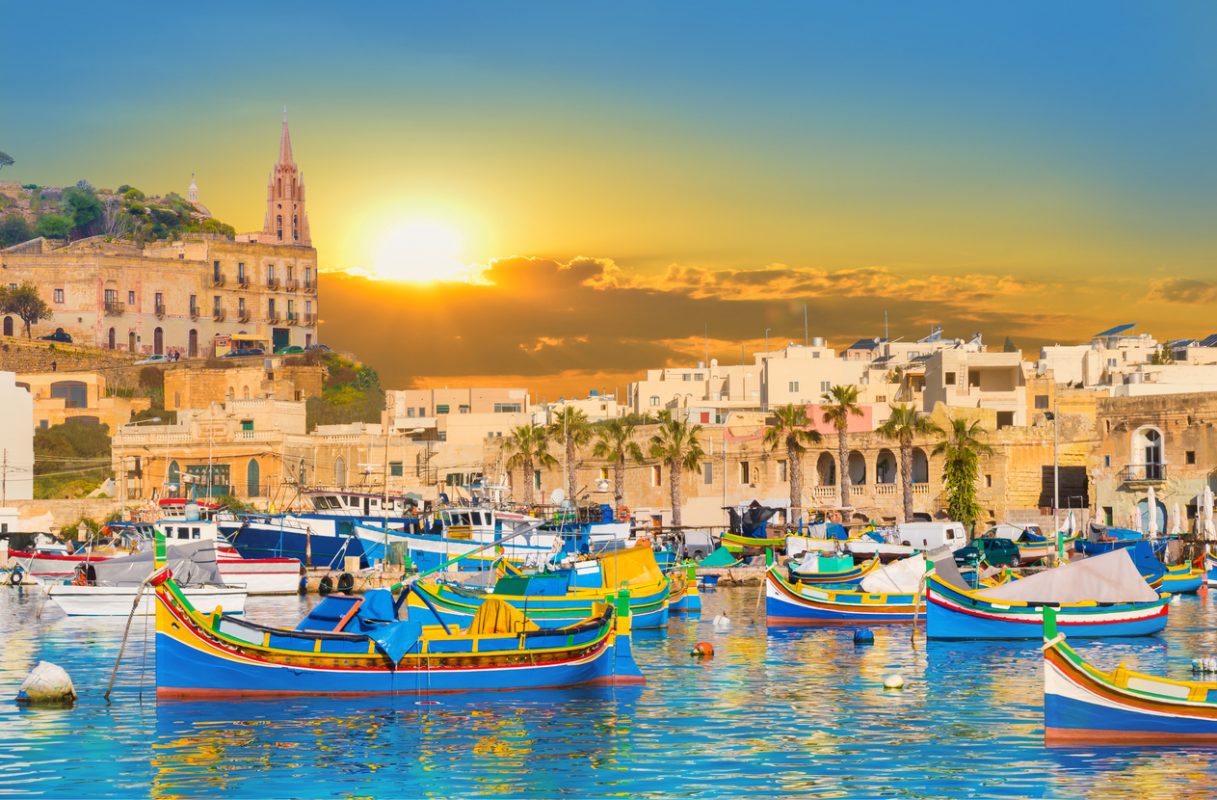
Average temperature in January: 16°C/ 61°F high to 9°C/ 48°F low
Malta’s favourable winter temperatures make it a go-to destination for escaping the cold, but its array of attractions will keep you entertained throughout your stay.
The island boasts highs of around 16/17°C throughout the winter – basically a British summer!
Your first stop on the island should be Valletta, the capital city (and also the smallest capital in Europe!).
Meander through its streets and pop into St. John’s Co-Cathedral, adorned with intricate Baroque designs.
Moreover, the city’s Upper Barakka Gardens afford an elevated view of the grand harbour.
From Valletta, head out to Golden Bay or Mellieha Bay.
Even in winter, you can take a scenic walk along the shore, capturing the Mediterranean’s varying shades of blue.
While swimming might be a bit ambitious given the season, the mild weather is ideal for a picnic by the sea!
If you’re drawn to panoramic views, head to Dingli Cliffs is the place to be.
I hiked from Dingli Cliffs to the Blue Grotto in winter, and while it was wonderful, I couldn’t imagine doing it in the summer!
See my full video of it below!
Alternatively, head to Gozo, Malta’s sister island, and take a hike around the Ramla Bay area to see its reddish sand contrasting the deep blue sea.
Diving’s possible year-round, but in January or February you might want a dry suit! I visited in March, and it was doable with a wet suit then!
30. Antalya, Turkey
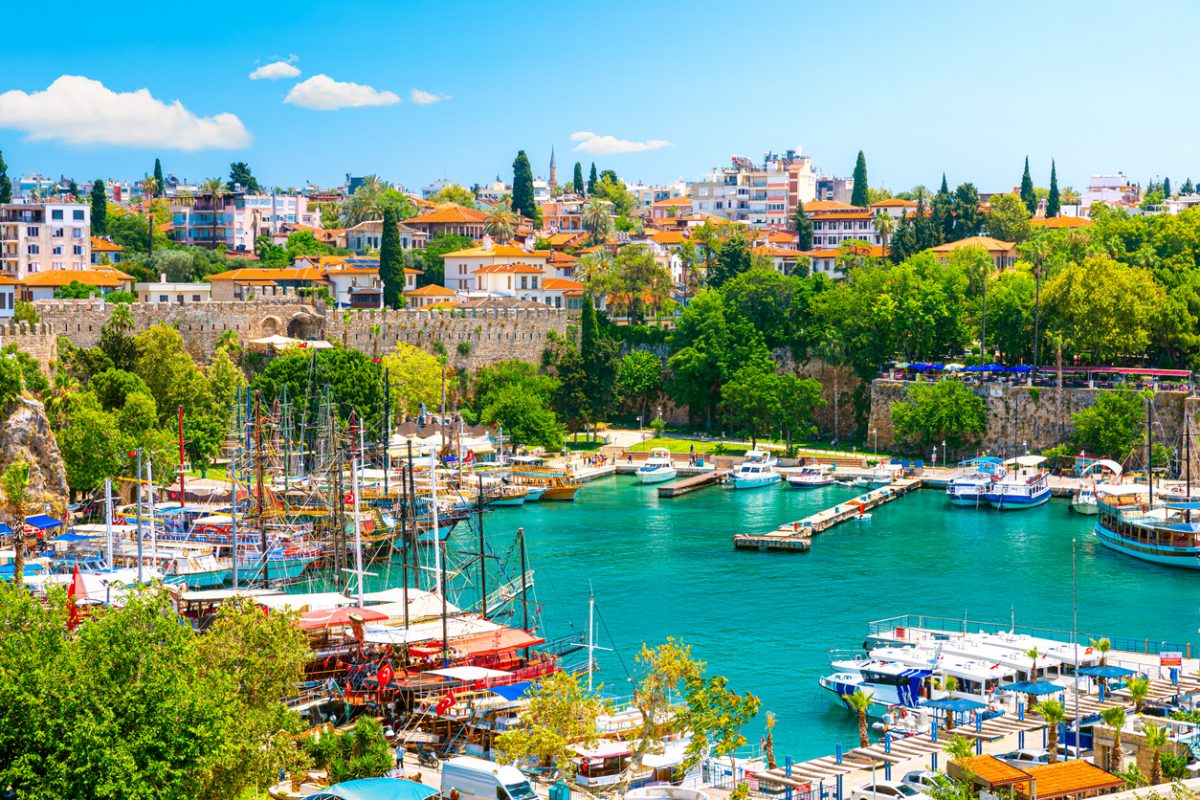
Average temperature in January: 15°C/ 59°F high to 8°C/ 46°F low
Antalya, on Turkey’s southern coast, is wonderfully tranquil in the off-season and one of the best places to visit in Turkey in the winter season.
While you might encounter some rain, clear and sunny days are not uncommon.
With temperatures that are generally mild, you can take advantage of the city’s diverse offerings without the usual throngs of tourists!
Begin your visit with a stroll along Konyaalti Beach, where the Taurus Mountains serve as a stunning backdrop to the sprawling coast – you might see them dusted in snow (it snows a lot in parts of Turkey) while enjoying the coastal warmth!
Though winter isn’t ideal for a swim, the shoreline is perfect for a leisurely walk or a seaside lunch.
Fan of history? Antalya boasts an array of archaeological sites.
Aspendos is one of the best-preserved Roman theatres.
Another compelling site is the ancient city of Perge, with its well-preserved Roman baths, collonaded streets, and an acropolis.
The winter weather is far more forgiving than the summer heat!
Back in the city, head to Kaleiçi, its historic center.
Here, Ottoman architecture meets modern boutiques and eateries.
Don’t miss Hadrian’s Gate, a triumphal arch erected in honour of the Roman Emperor Hadrian.
Just a short walk from the gate, you’ll find numerous shops where you can sample Turkish delicacies like baklava or Turkish tea.
If you’re looking for a day trip, consider visiting the Düden Waterfalls.
These falls are particularly striking in the winter, with less foliage to obstruct them!
Three hours away from Antalya is the gorgeous town of Kas, which is also a great place to visit in winter.
Check out my full guide to Antalya in winter here!
31. Fethiye, Turkey
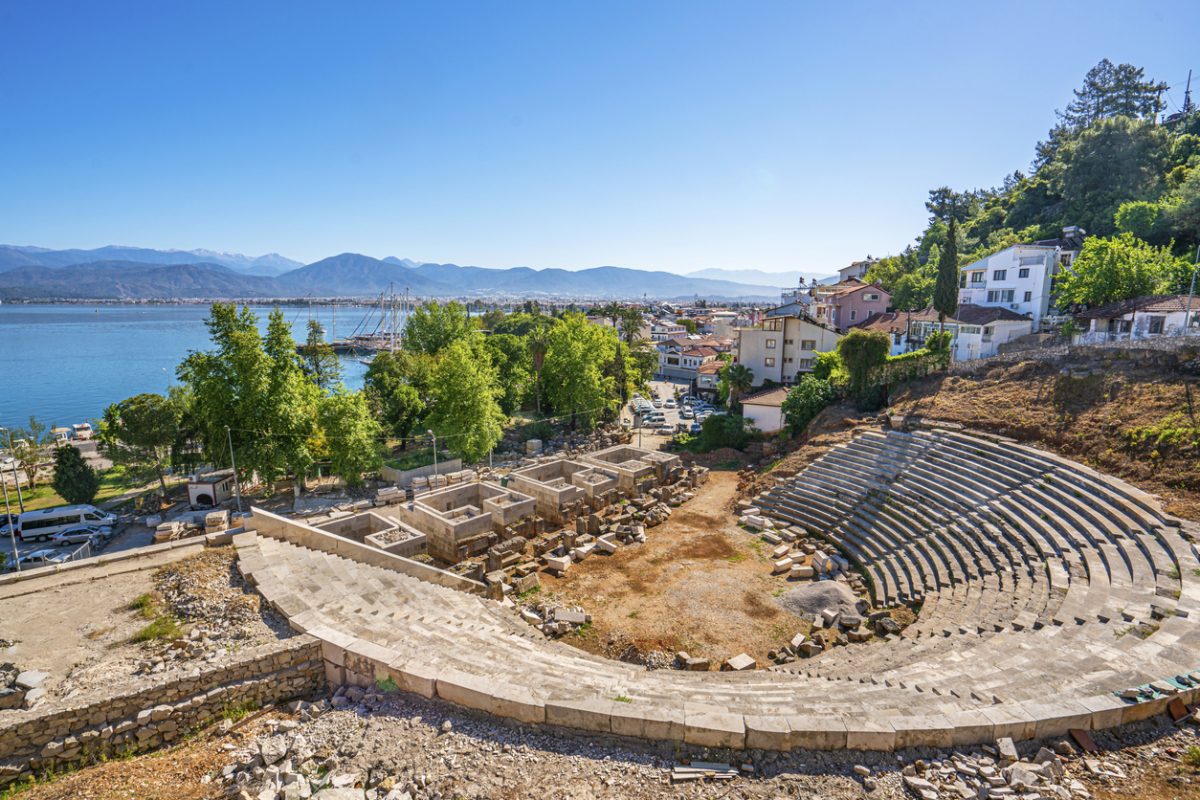
Average temperature in January: 15°C/ 59°F high to 6°C/ 43°F low
Positioned along Turkey’s southwestern Turquoise Coast, Fethiye’s allure lies in its natural and historical attractions, which are best enjoyed without the summer crowds.
Ölüdeniz Beach stands out for its breathtaking views and calm waters, and it’s all but deserted in the winter.
Nearby Butterfly Valley is another must-see.
The valley is accessible by boat, and although the trip is weather-dependent, it’s well worth planning.
The Lycian rock tombs, carved into cliffs overlooking the city, are well worth a visit.
The Tomb of Amyntas is the most prominent and offers panoramic views of Fethiye and the surrounding area.
Another local gem is Kayaköy, or the “Ghost Village.” Abandoned after the Greco-Turkish War, the village’s empty houses and churches paint a haunting picture.
For a unique shopping experience, visit the Fethiye Market.
Whether you’re looking for fresh produce, textiles, or traditional Turkish sweets, you’ll find it here.
The market is less crowded in the winter months, too.
32. Izmir, Turkey
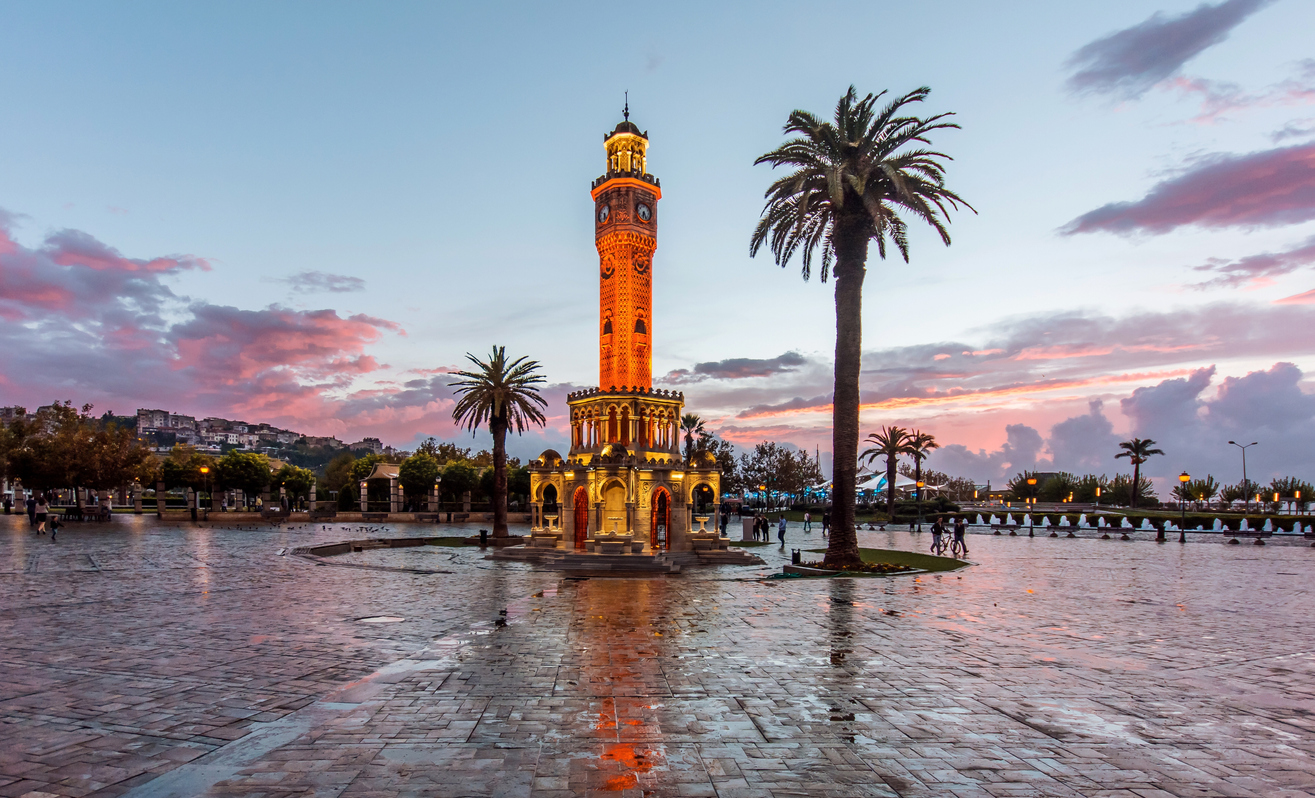
Average temperature in January: 12°C/ 54°F high to 6°C/ 43°F low
Izmir, Turkey’s third-largest city, occupies a prime spot on the country’s western Aegean coast.
While the weather during winter can dip to around 12°C, it’s usually mild enough to spend some time outdoors.
One of the most compelling reasons to visit Izmir in winter is the nearby archaeological site of Ephesus without the crowds.
Known for its well-preserved Roman buildings, Ephesus offers an unparalleled walk through ancient history.
In particular, the Library of Celsus and the Great Theatre are must-see landmarks.
Izmir itself is a city of contrasts, where modern urban life melds seamlessly with ancient history.
The Kemeraltı Bazaar, a maze-like market area, is perfect for those looking for an authentic Turkish experience. Here, you can haggle for spices, textiles, and local crafts.
Indoor attractions abound as well, just in case the weather isn’t so kind.
The Izmir Museum of History & Art is an often-overlooked gem that boasts an impressive collection of sculptures and ceramics dating back to the early civilizations that settled in the area.
Also, don’t miss the Atatürk Museum, which provides an intimate look into the life of Mustafa Kemal Atatürk, the founder of modern Turkey.
You can read all you need to know about visiting Izmir in winter here.
FAQs about winter sun in Europe
What is the hottest place in Europe in the winter?
The Canary Islands are probably the most popular destinations for winter sun in Europe, but Tenerife is widely regarded as the warmest place in Europe in the winter.
It has temperatures usually around 20C/mid-70s F.
What is the warmest city in Europe in winter?
The Canary Islands have the warmest cities, but in mainland Europe, you’re probably looking at Andalusian cities like Marbella or Malaga.
Of course, this can change year on year, but if you’re looking for a winter escape that’s easy to access from the rest of Europe, the Costa del Sol in Southern Spain is a good option!
Where is best for winter sun in Europe?
For reliable winter sun, head to the Canary Islands.
Off the coast of Western Africa but part of Spain, these islands offer temperatures in the high teens and low twenties even during winter months.
Tenerife, Gran Canaria, and Lanzarote are especially popular choices for warm-weather activities like hiking and beachcombing.
What was the warmest winter year in Europe?
The warmest winter recorded in Europe was in 2019-2020, according to the European State of the Climate report.
This winter was exceptionally mild, with temperatures more than 3.4°C above the 1981-2010 average. Notably, this resulted in reduced snowfall and increased concerns about climate change.
Where is the best country for winter sun in Europe?
Spain stands out as a top pick for winter sun in Europe.
It offers a diverse range of warm-weather destinations, from the Balearic Islands to the Canary Islands, and even cities like Barcelona and Seville on the mainland.
You’ll find plenty of sunshine along with an array of outdoor activities to enjoy.
Is Portugal warmer than Spain?
Portugal and Spain have comparable winter climates, especially in their southern regions like the Algarve in Portugal and Andalusia in Spain.
However, Spain offers more consistently warm destinations, such as the Canary Islands, making it generally warmer than Portugal during the winter months.
Where is the cheapest place for winter sun in Europe?
Albania is a cost-effective option for winter sun in Europe. While not as warm as Spain or Portugal, it has mild temperatures and fewer crowds.
Coastal towns like Saranda on the Albanian Riviera provide affordable accommodation and dining options without skimping on natural beauty.
Where is hot and cheap in Europe at Christmas?
If you’re looking for a budget-friendly yet warm destination in Europe during Christmas, consider Malta.
With highs around 16-17°C, Malta boasts pleasant weather to explore its rich history and natural beauty.
Costs for accommodations and food are relatively low compared to other European destinations, making it a great choice for a warm and affordable Christmas getaway.
So, are you ready for these winter sun holidays in Europe?
Whether you’re heading far south to the Canary Islands, or hopping around Greece, there are plenty of hot winter destinations in Europe, with mild temperatures that’ll have you shaking off the layers!
Where’s your top pick?
